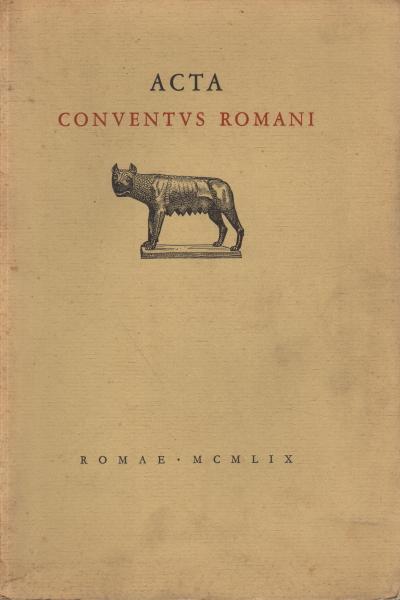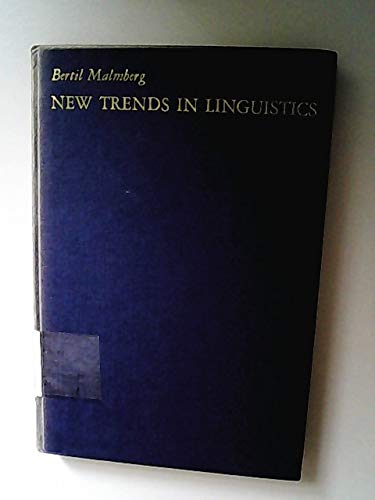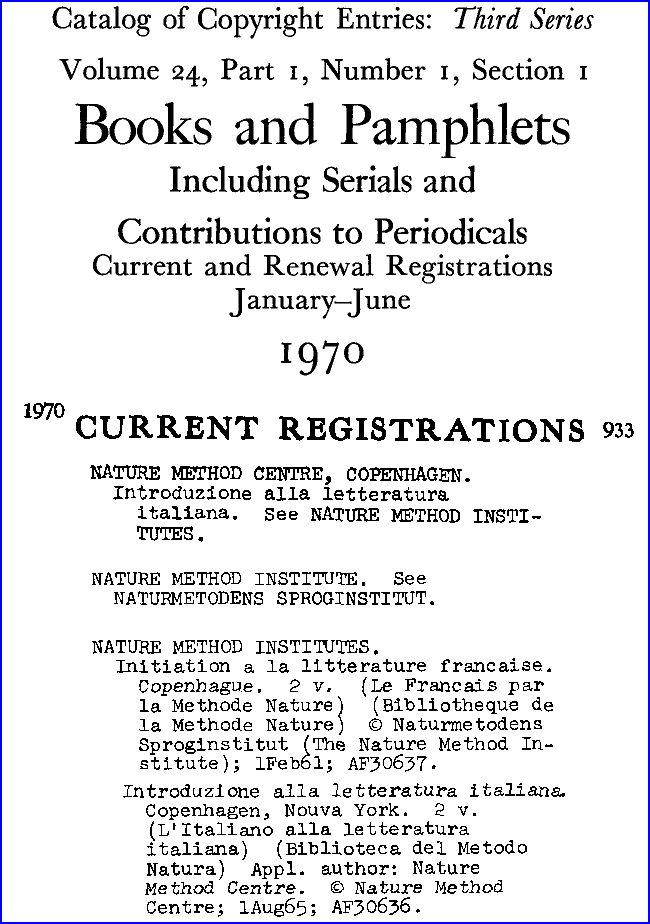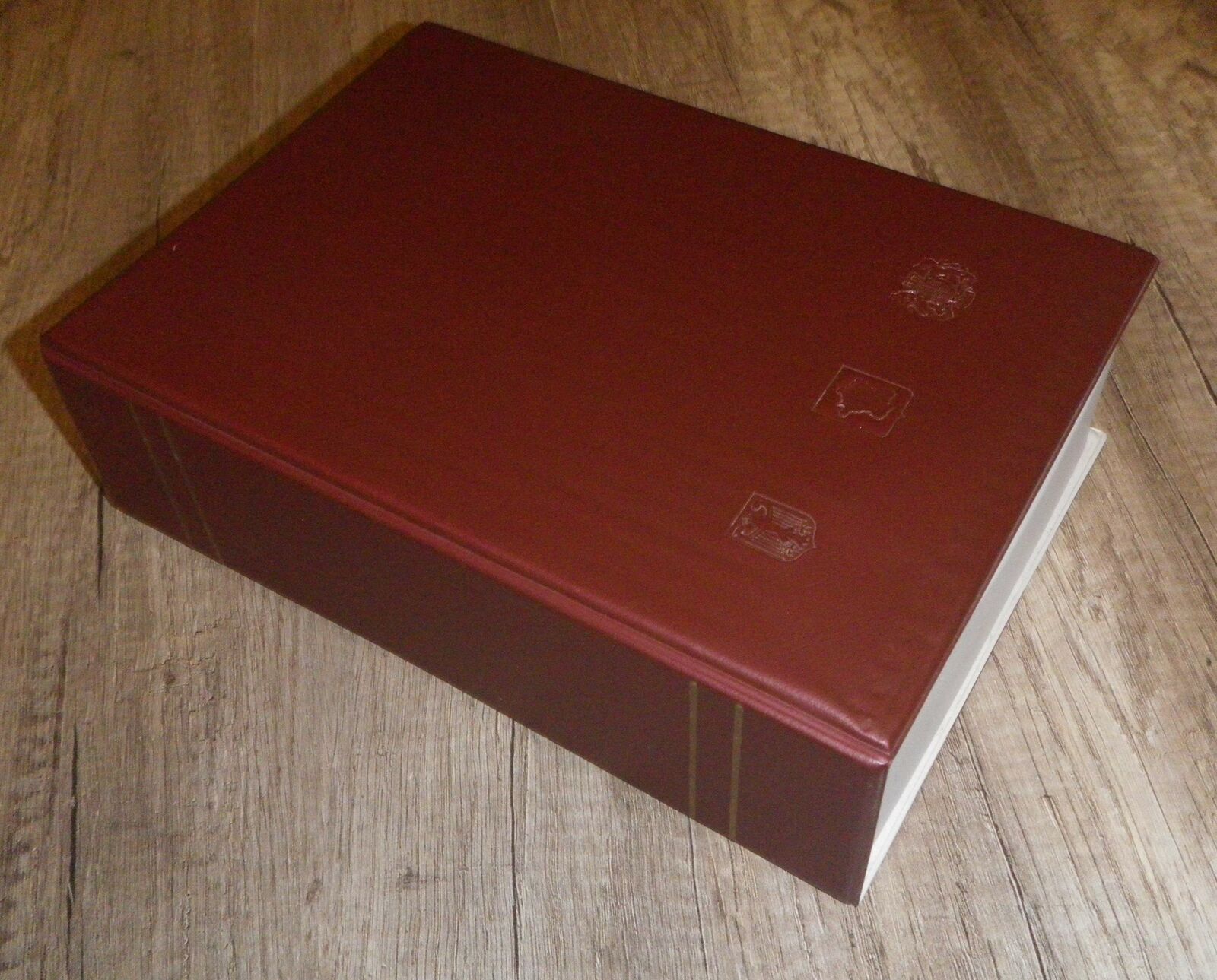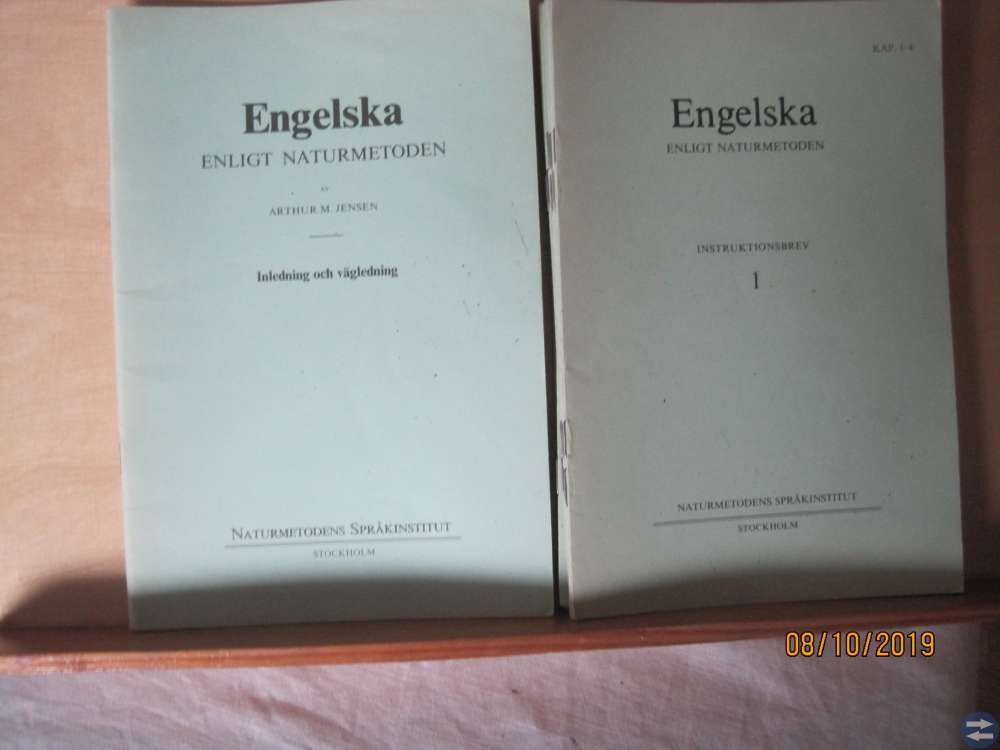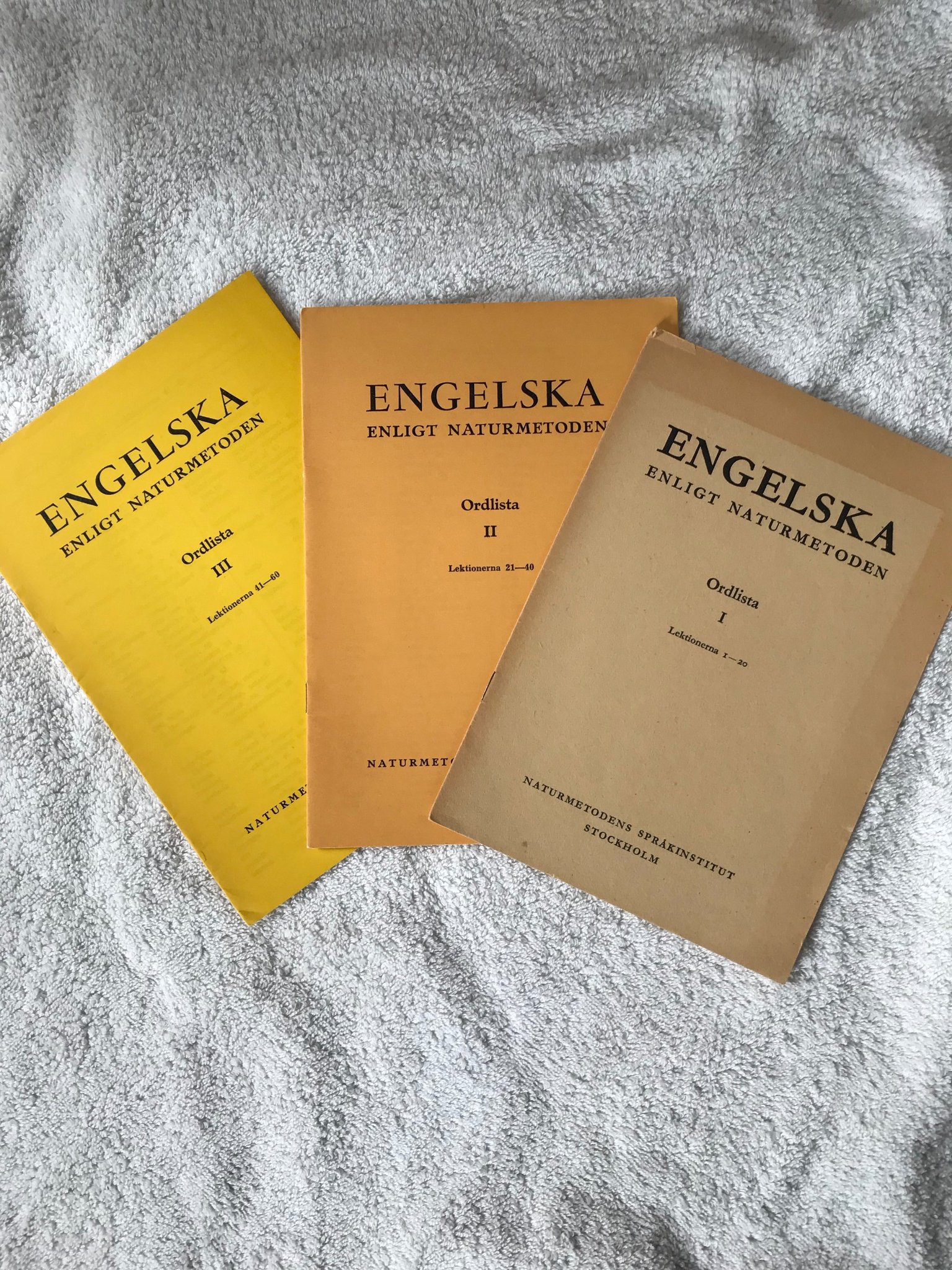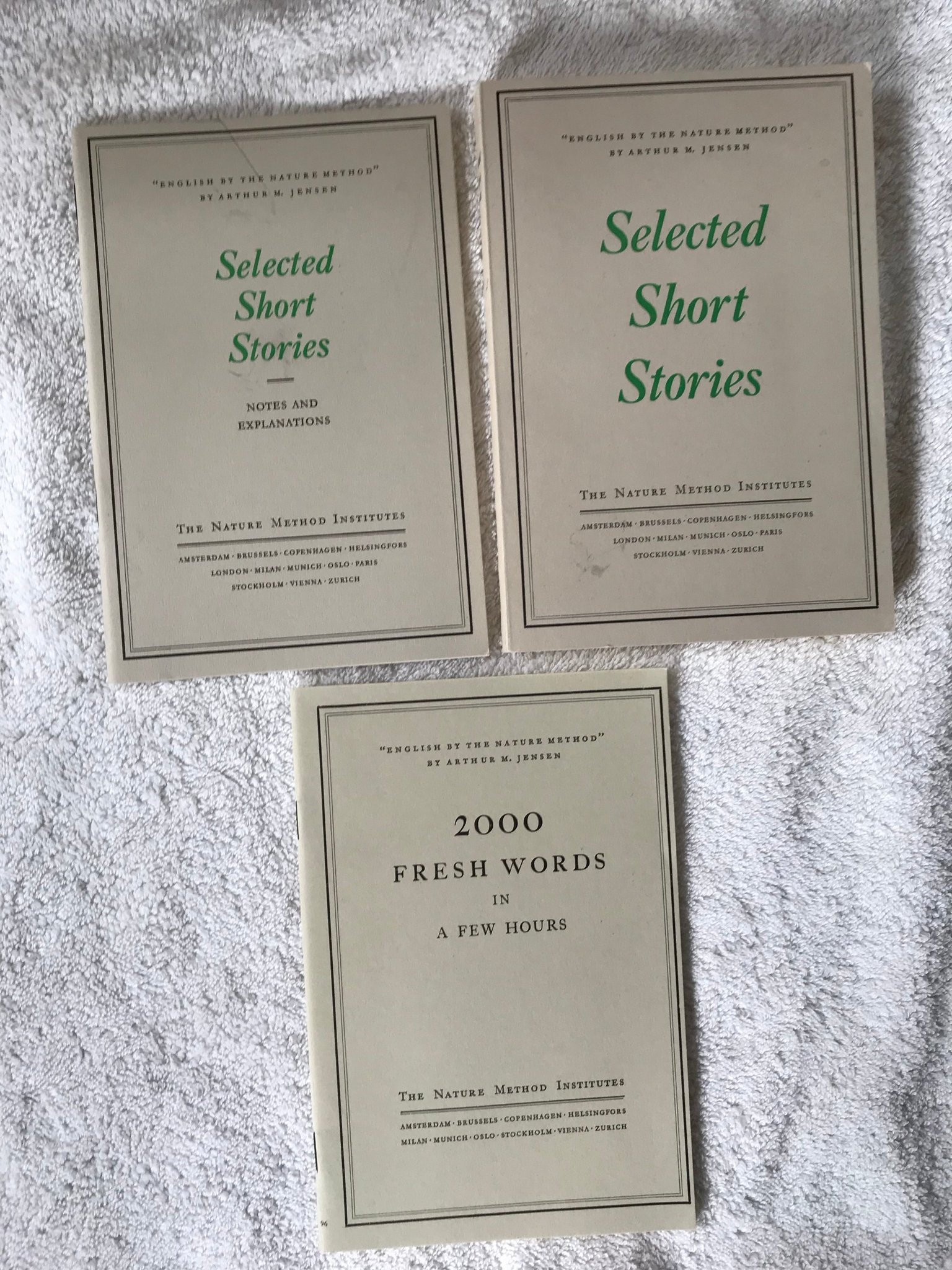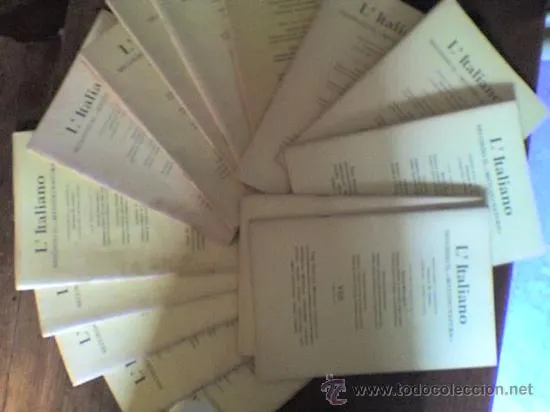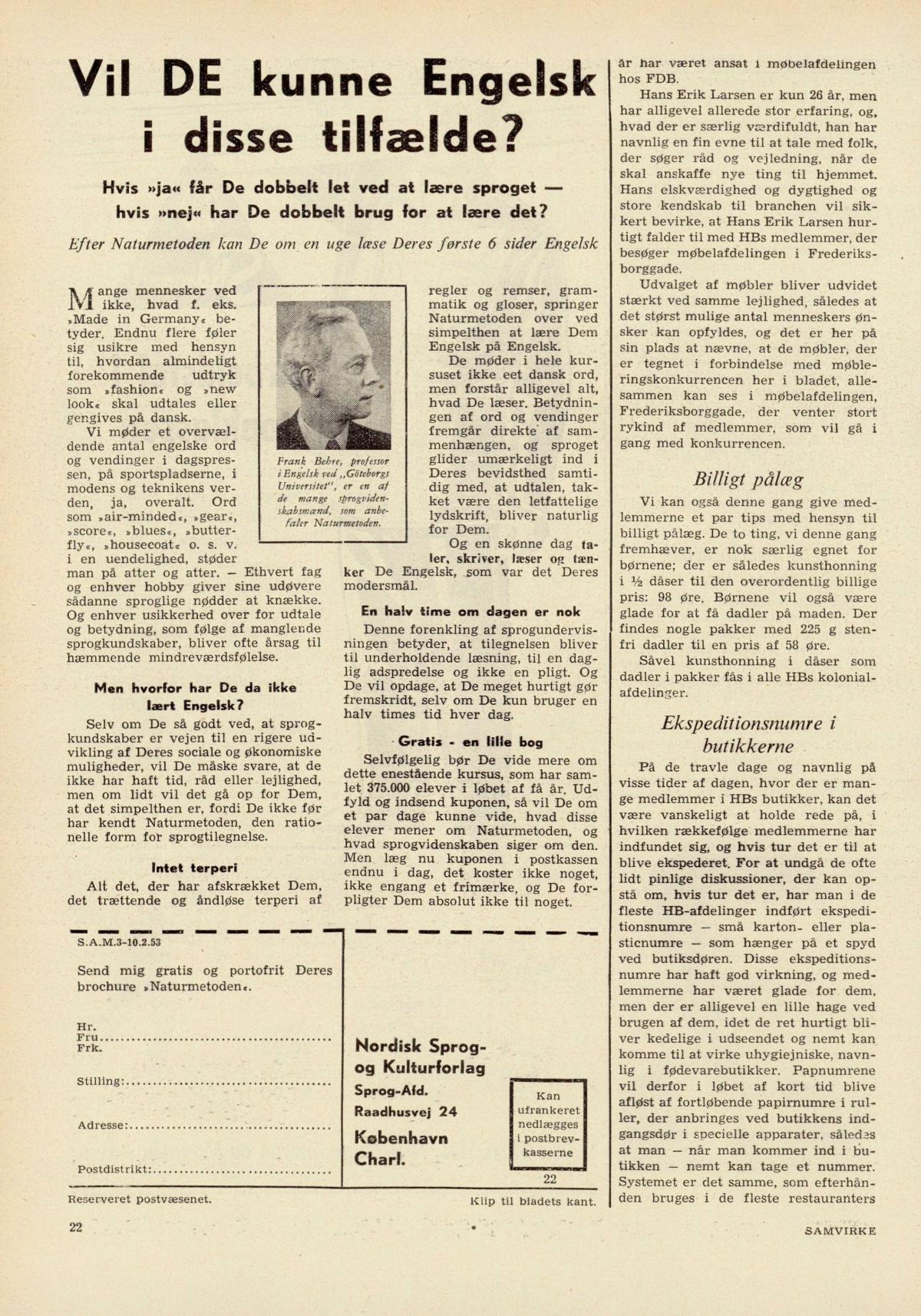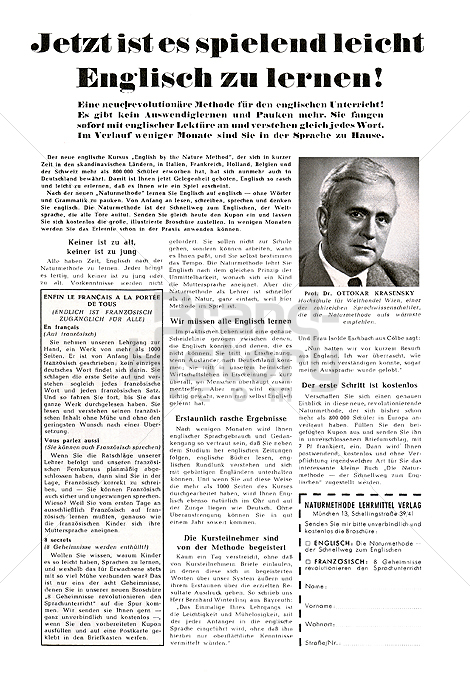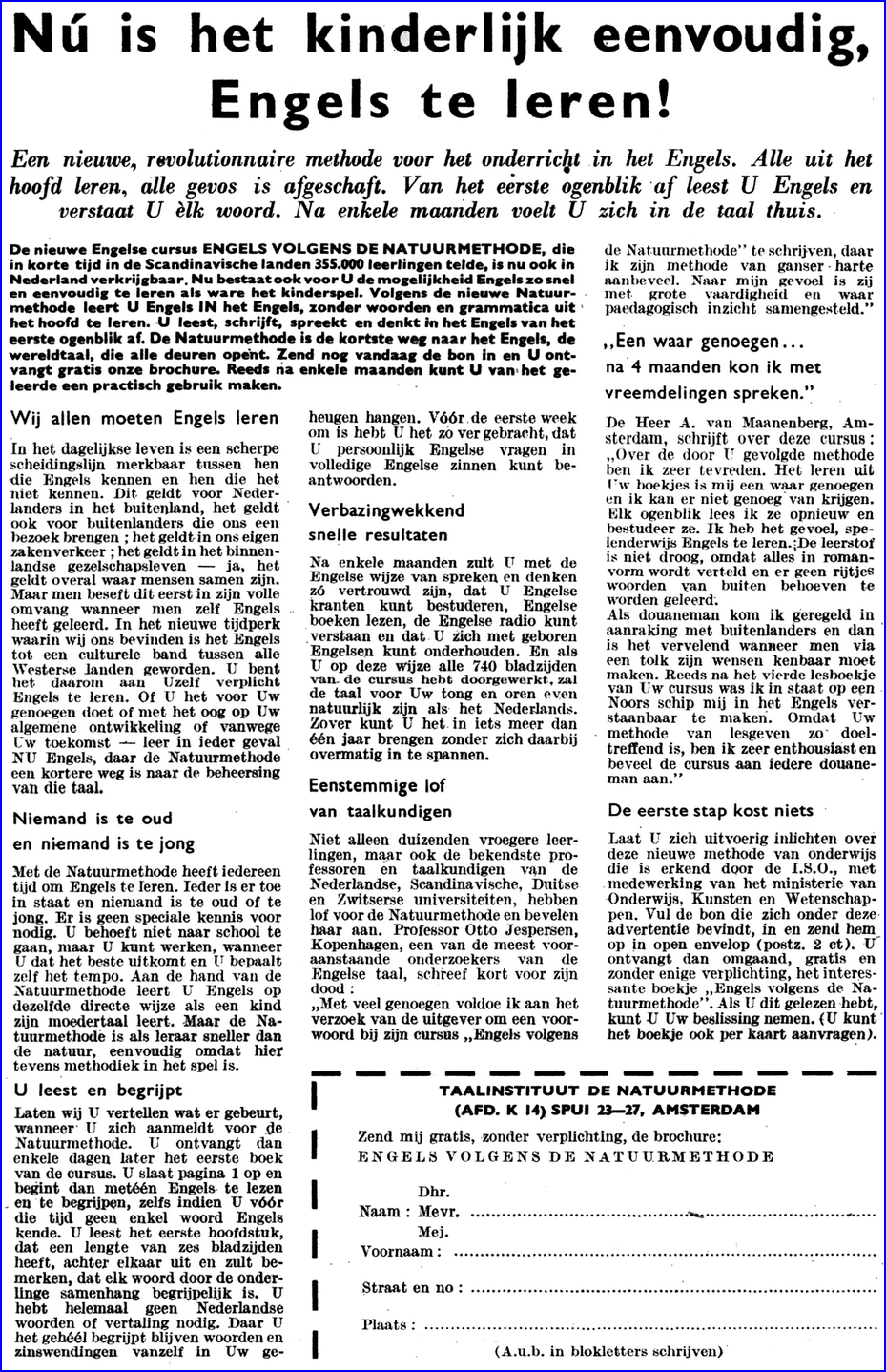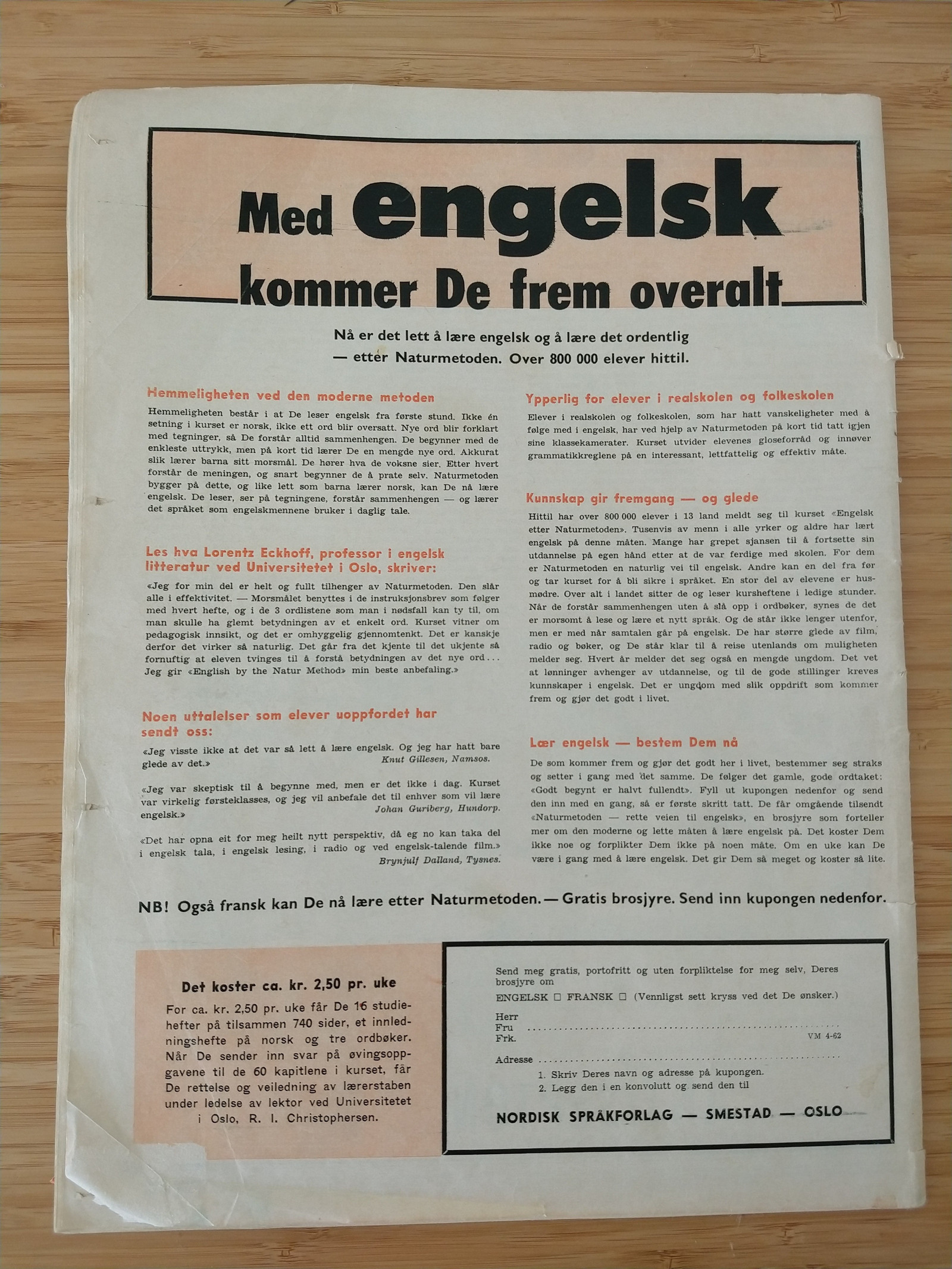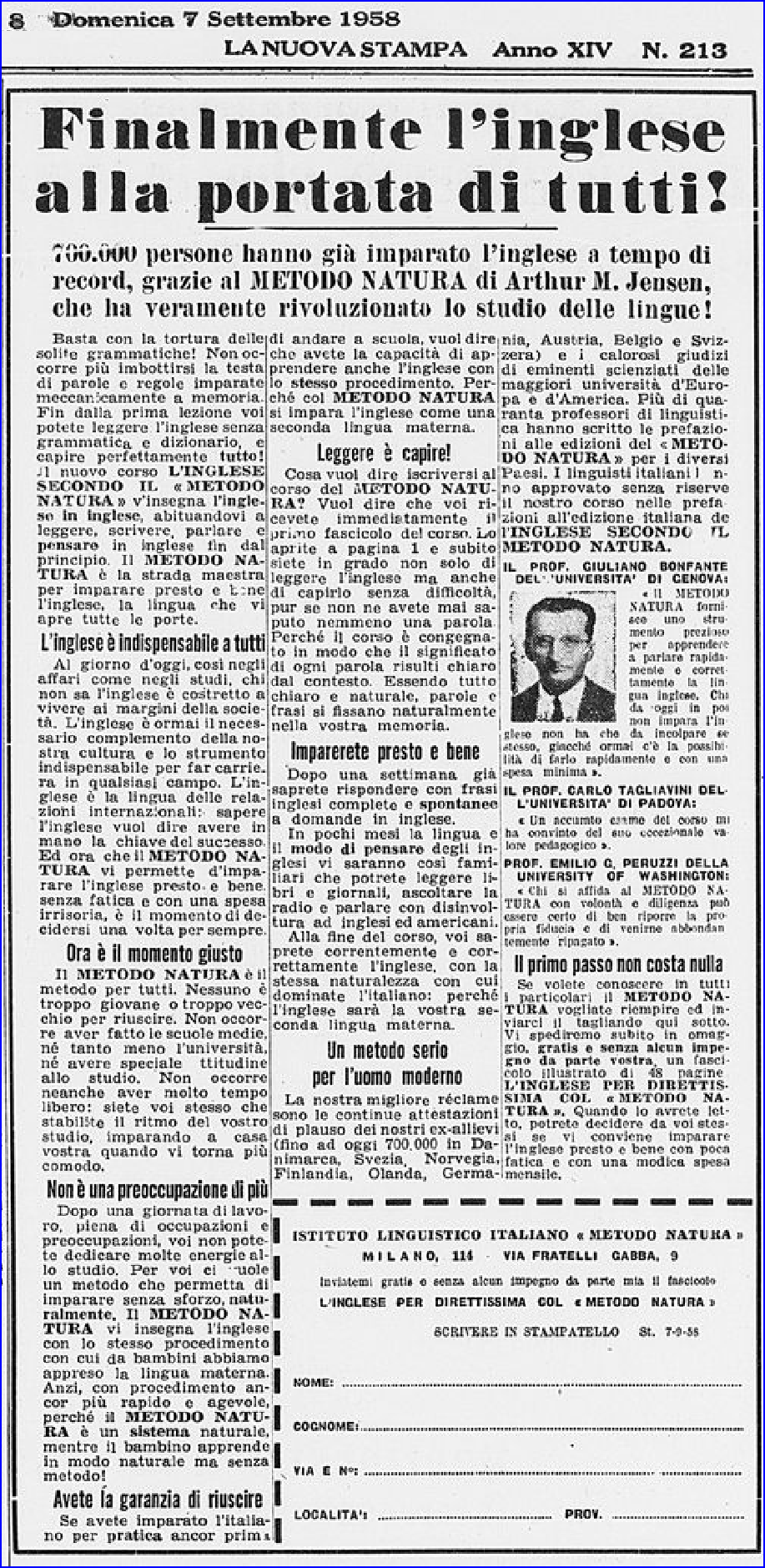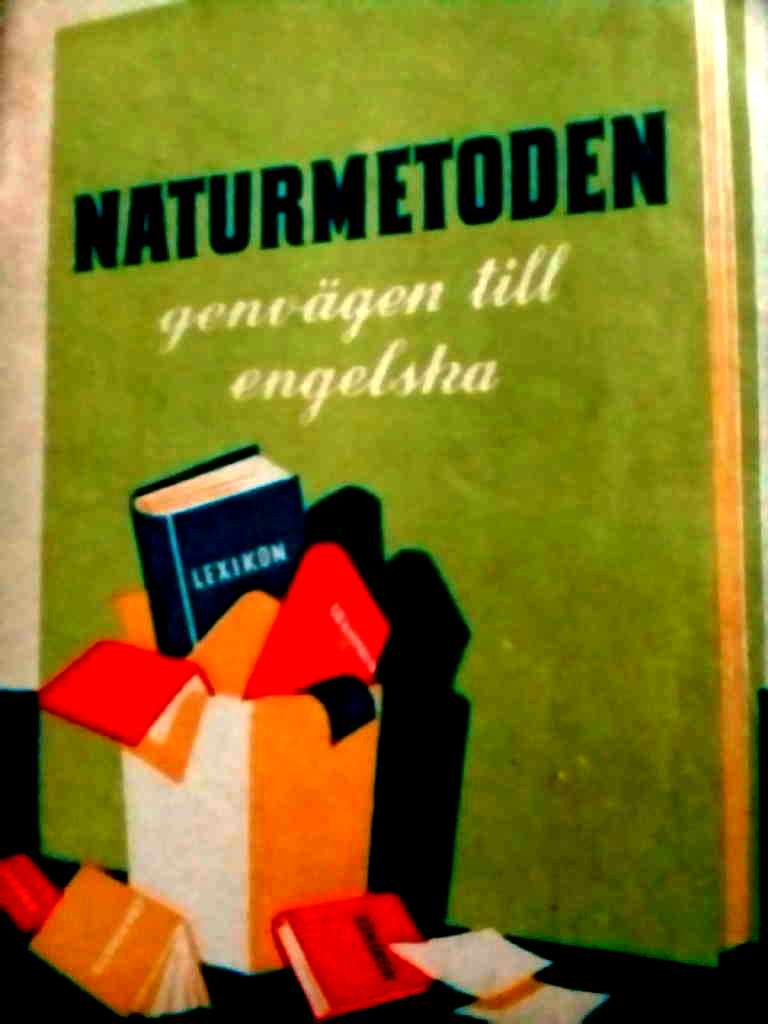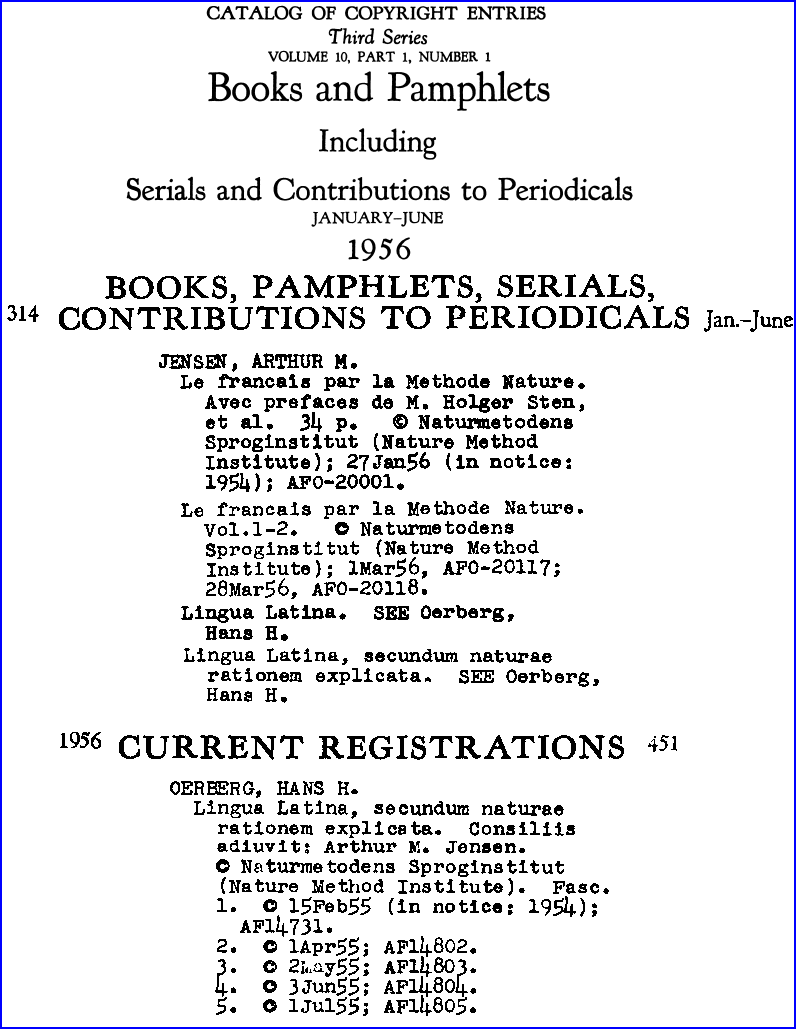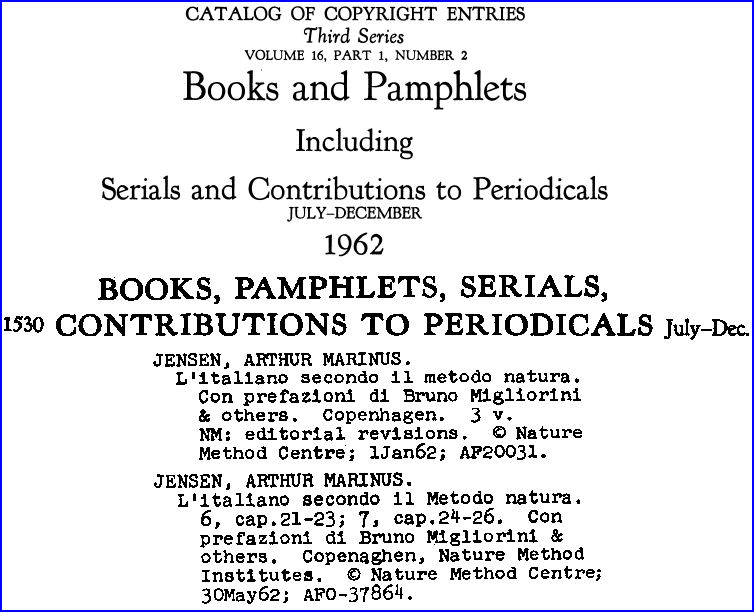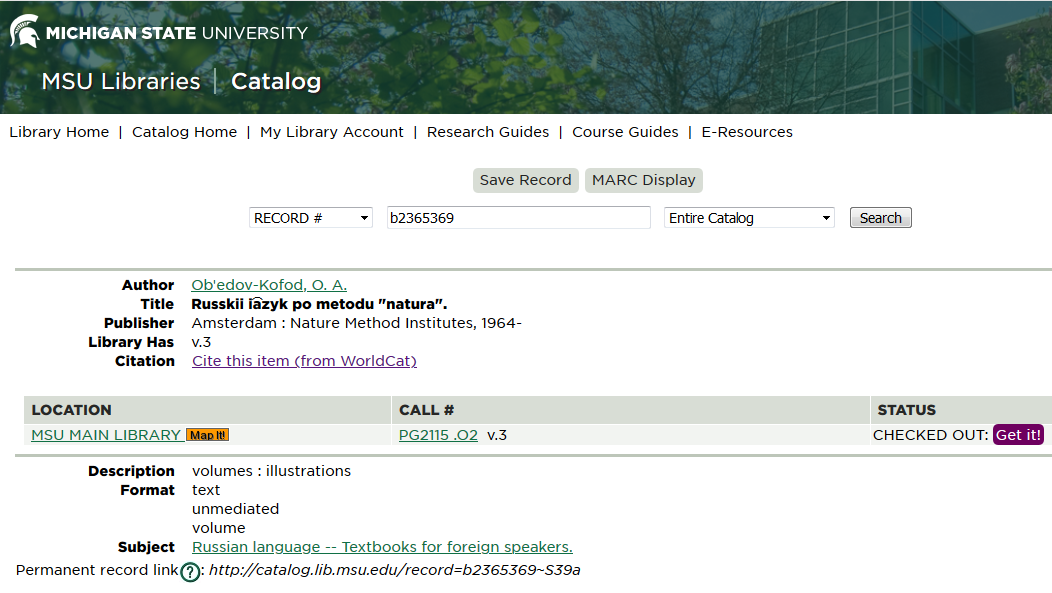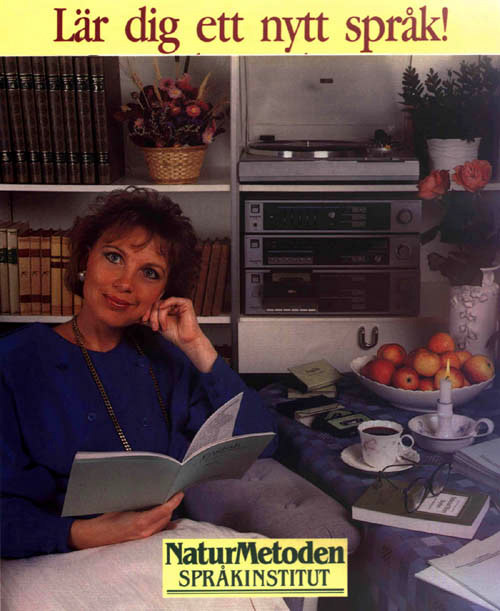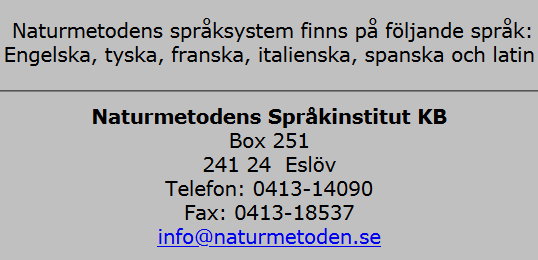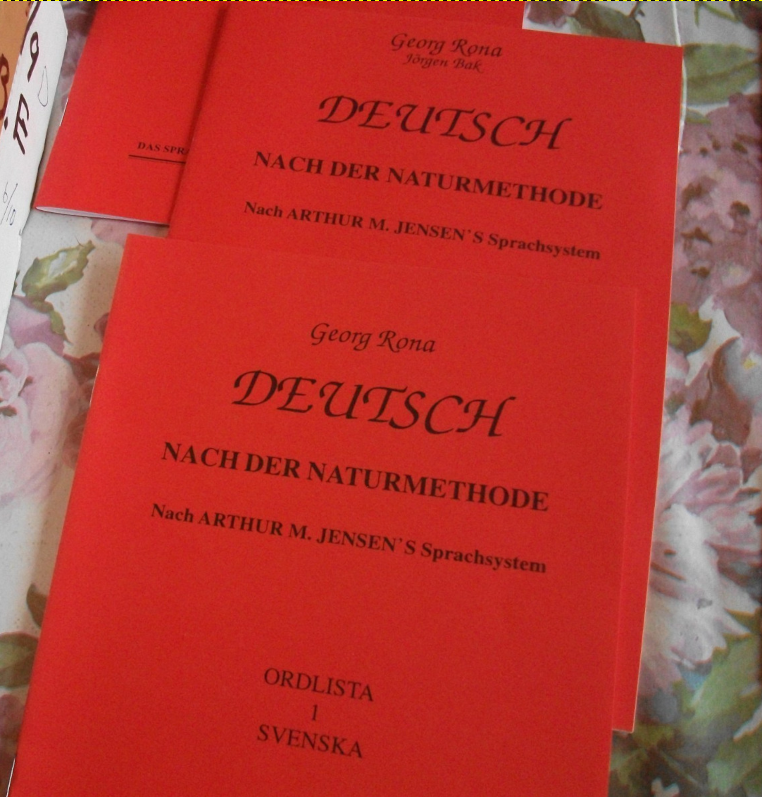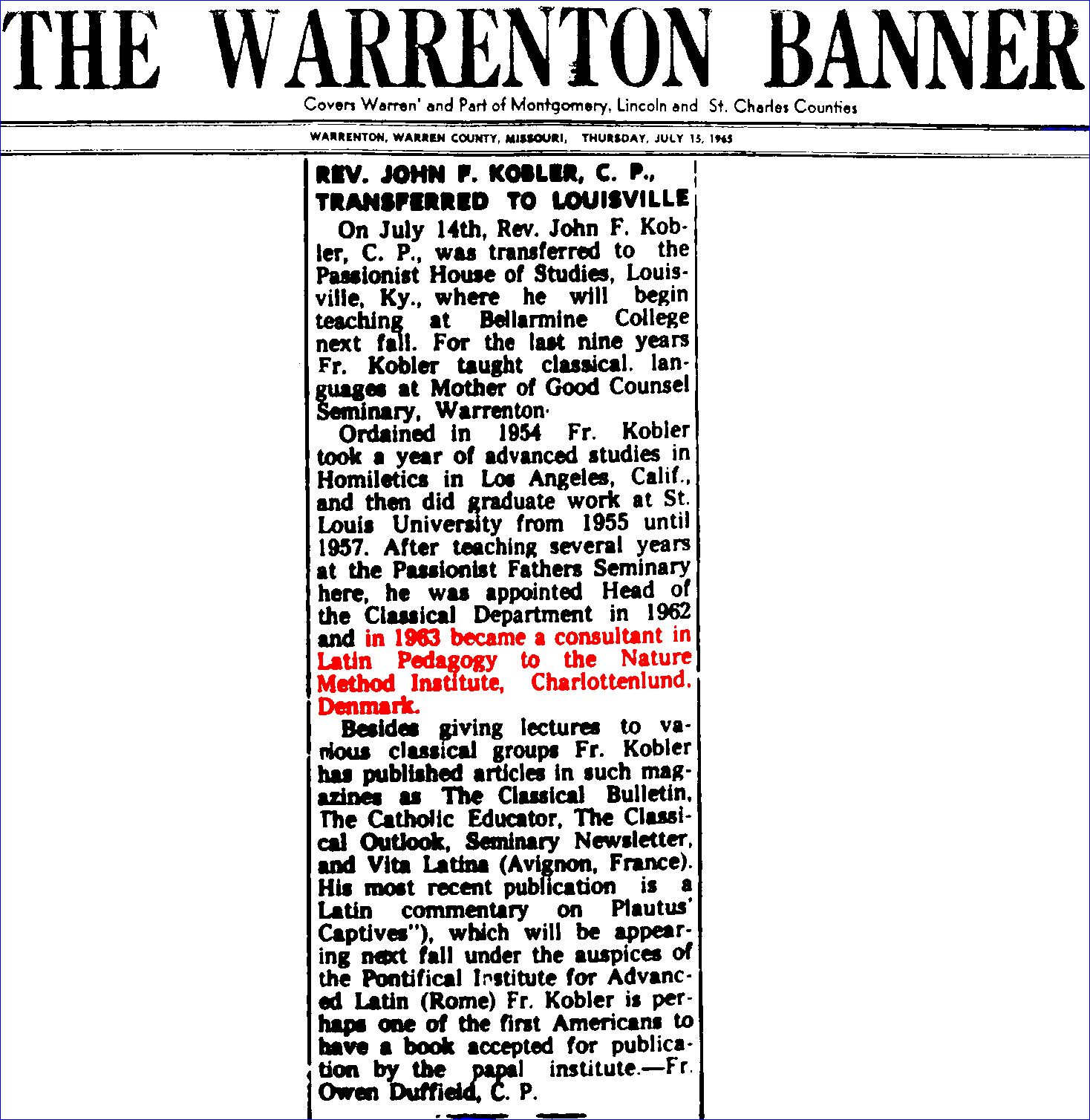
This might be Arthur Marinus Jensen (1891–1965).
If it is, then he married Ragna Birgitte Elisabeth Haugaard Bruun (1896–circa 1980).
If so, here she is:



Arthur’s daughter was Thurid Jensen (1916–198?):



Younger and older Thurid Jensen, and her husband, Eigil Grièse.
The above is stolen without any permission from (but with infinite thanks to!) “Ming Griese 1945.”
I stumbled onto some fascinating information about Arthur Marinus Jensen, the publisher of a series of language books.
His first book,
English by the Nature Method (or Engelsk efter naturmetoden), was self-published in 1939.
It was actually his daughter, Thurid Grièse, and a colleague, Knud Schibsbye, who wrote it anonymously.
It seems that he founded The Nature Method Institute by about 1942,
and it may have been merely a DBA to provide his book an imprint.
Soon enough, The Nature Method Institute actually began offering classes,
and, in 1953, Hans Henning Ørberg became one of the Institute’s instructors.
In 1954, Jensen published another course,
Le Français par la «méthode nature»,
written anonymously by Thurid Grièse and Oleg Koefoed.
Ørberg convinced Jensen to offer instruction in Latin as well,
and, in the early 1950’s, he began penning a Latin course on the same pattern as the English and French courses.
The first lessons were published in 1955 and the final lessons came out in 1957:
Lingua Latina secundum naturae rationem explicata.
In 1962, Jensen published a third course,
L’ Italiano secondo il «metodo natura», anonymously written by Oleg Koefoed.
If you don’t understand why this so interests me, and if you don’t understand why this should interest you,
then just take a look at page one, just page one, of the Italian course:
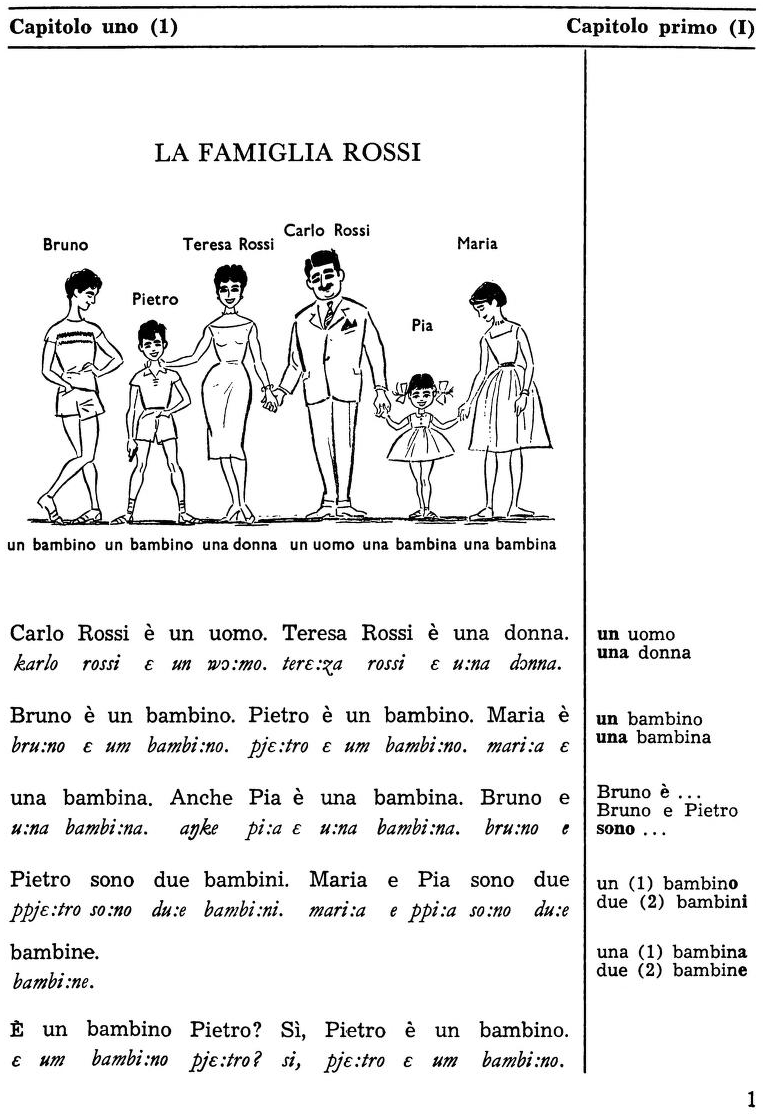
Is that not simply ingenious?
You don’t need to know ANYTHING about the language, and yet you find yourself reading it aloud and understanding it almost EFFORTLESSLY.
The Nature Method Institute began to spread to other countries.
What these foreign branches did, I do not know, but my guess is that they were entirely informal.
Each branch probably rented a room in an office building, primarily just to have a mailing address,
and maybe offered courses, maybe in person, maybe by correspondence.
If you take a look at an online conversation called “The Nature Method Institute’s Language Courses,”
posted at A Language Learner’s Forum, you will discover that people have performed fruitless investigations of
The Nature Method Institute and its history.
Despite traveling to all the addresses and making inquiries with the locals, nobody has been able to turn up any substantial information about the Institute.
Courtesy of that online conversation, as well as “The Nature Method Institute’s Language Courses,” we can discover
a partial list of the international outlets.
The Nature Method Institute formed affiliations with these already-established companies:
|
Nordisk Sprog- og Kulturforlag 24, Raadhusvej Copenhagen Chl. |
Förlagsaktiebolaget Union Kustannusosakeyhtiö 3, Sjötullsgatan Helsingfors (Helsinki) |
||
|
Nordisk Språkforlag Hovseter Oslo |
Nordiska Sprak- och Kulturförlaget 71, Götgatan Stockholm |
||
|
Sprachlehrmittel Verlag 41, Talacker Zurich |
|||
The Nature Method Institute also established several offices of its own:
|
Naturemethode Sprachlehrinstitut GmbH Döblergasse 4 Wien (Vienna) VII |
The Nature Method Company 17, place Rouppe Bruxelles (Brussels) |
||
|
Naturmethode Lehrmittel Verlag GmbH 39–41, Schellingstrasse Munich |
Taalinstituut de Natuurmethode 23–27, Spui Amsterdam |
||
|
The Nature Method Institute [still operating?] 174 Phrasumen Rd. Khwang Boworn Niwet Khet Phra Nakhon Bangkok |
Istituto Linguistico Italiano “Metodo Natura” Srl via Fratelli Gabba, 7 Milano 114 |
||
|
The Nature Method Language Institute, Ltd. Stuart House 1, Tudor Street London EC4 |
The Nature Method Language Institute, Inc. 110 East 42nd Street Manhattan NY 10017 (opened circa 1962) |
||
| Under some name, somewhere in Heidelberg |
Institut « Méthode Nature » 60–62 rue d’Hauteville Paris X |
||
| Under some name, somewhere in Monaco (circa 1958) |
|||
Searches through bookseller listings, library listings, Google queries, and copyright listings reveal other titles published by The Nature Method Institute:
It appears that different branches of The Nature Method Institute issued the identical courses but with different covers:
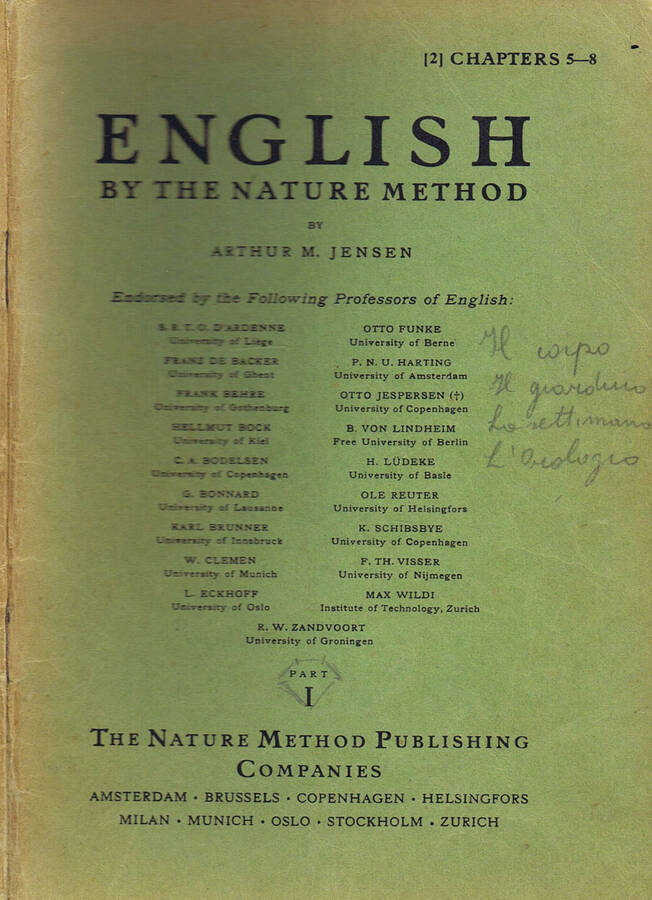
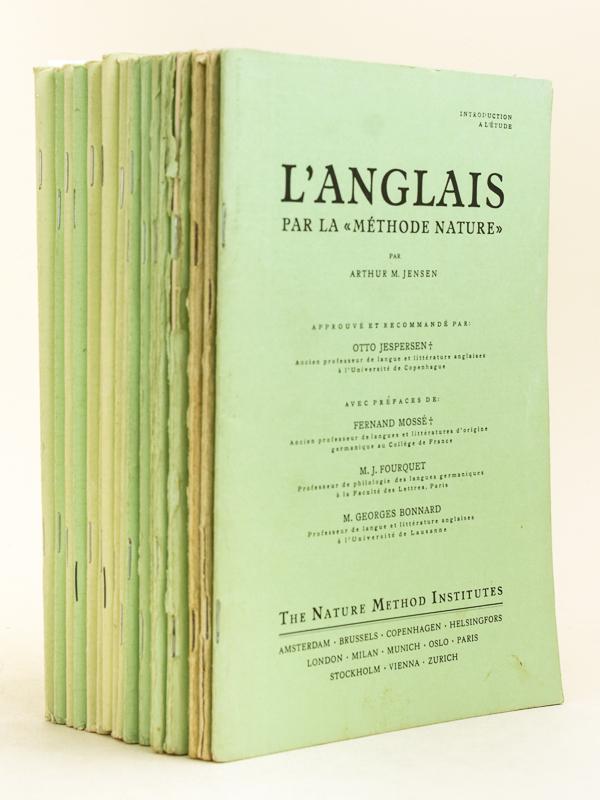
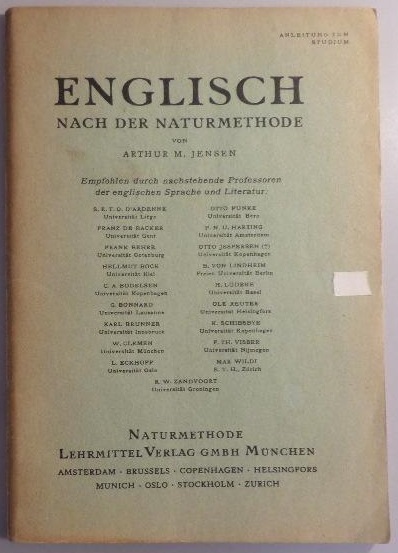

Munich printing on the left, Helsinki printing on the right.



Hardcover edition issued in Bangkok in 1957, published (or printed?) by Sangthong Publishing House.
There was also a Belgian publication of Engels volgens de natuurmethode.
The book, Impariamo conversando, is NOT part of the Nature Method course.
The rest of the items in this image are indeed part of the course, though.
Note the vinyl binder that housed all these items.
Note the three pamphlets. Surely there were about a dozen more.
Note the 45rpm disc in the plastic bag. There were 19 discs altogether.
It turns out that the Swedish title for the French course is
Franska enligt naturmetoden, published by the Naturmetodens Språkinstitut;
The Italian course is also interesting:
Above we see the original version, consisting of 15 pamphlets.
Recently, though, I acquired this:

This is volume 1. Volume 1 of what?
A
review tells us that there were three volumes in toto.
I was startled when I turned the pages, though.
You will be startled, too.
On the left is page 1 as it appears on Archive.org.
On the right is page 1 as it appears in this hardcover copy.

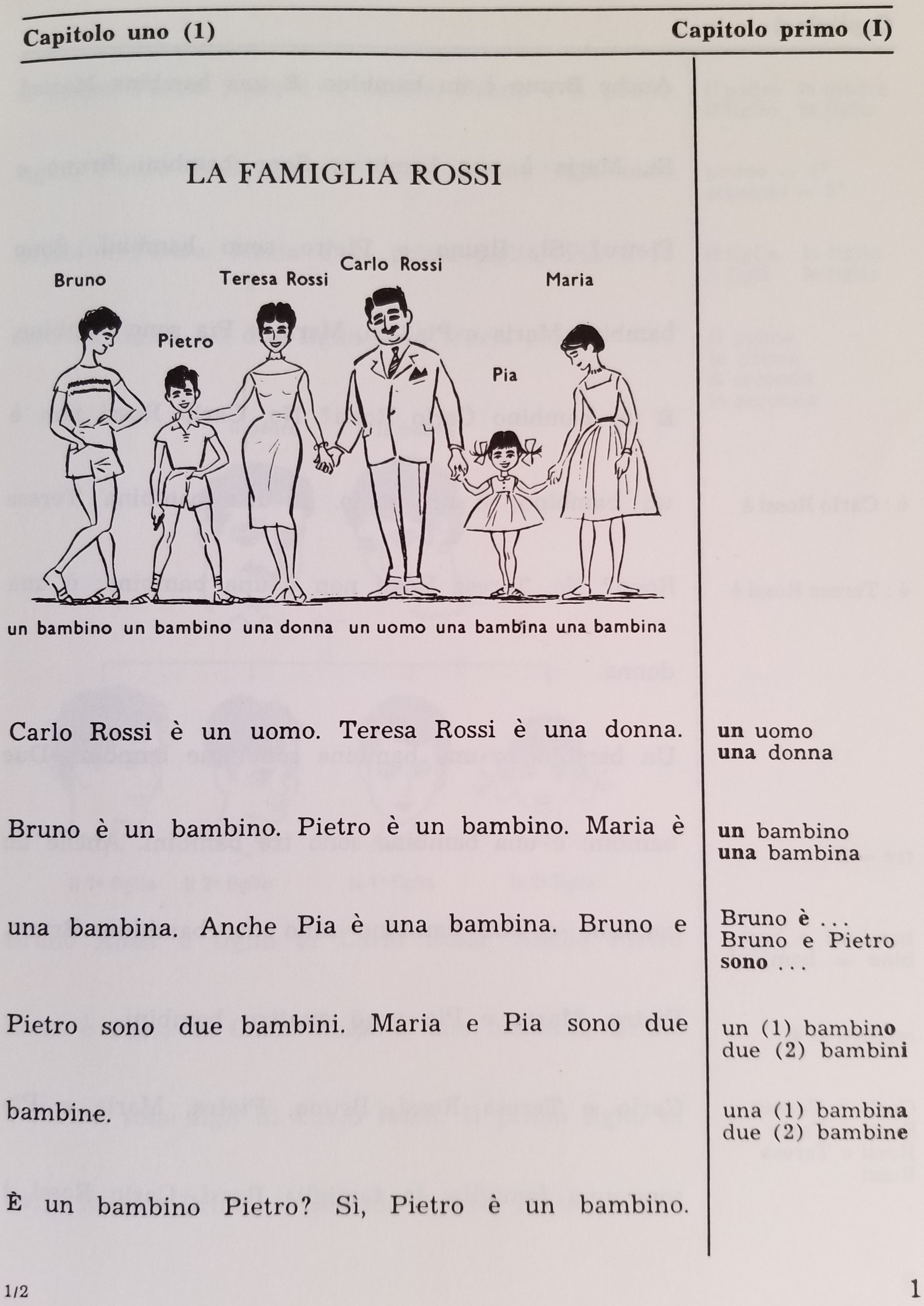
Do you see the error?
The printer neglected to include the phonetic transcriptions!
Also, and most puzzlingly, this volume includes an Italian-to-English glossary at the back!
There was no need for that at all.
Not all the courses were published as series of staple-bound pamphlets.
Here, for instance, are two particular iterations of the complete Latin course, in four hardcover volumes:

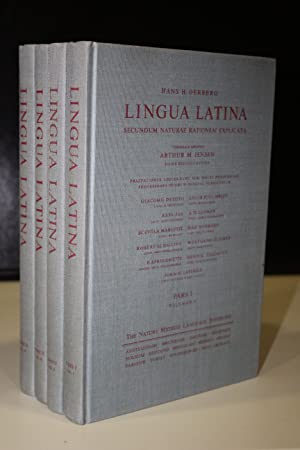
Galaxyrocker also points out that there was at least the beginnings of a Danish course,
Dansk efter naturmetoden, published in 1954/1955:
OCLC 465666074.
Some Interesting Advertisements
The above advertisements lead us to a memoir by
Ola Svorkens,
En unik samling originale aviser 1940–45.
This is fascinating for multiple reasons.
First of all, personally, I identify, except that I never had a family who supported my interests.
Second, this is an actual experience of a youngster who actually passed the correspondence course.
Third, this was actually a correspondence course!
The brochure he mentions, and the brochure mentioned in the various advertisements, is something I would so love to see.
Well, I’ll be a monkey’s uncle. Look at this:
We see that Ola was able to get the audio scripts, but not the recordings.
My guess is that his dad couldn’t afford a gramophone.
What was in the audio scripts and in the recordings that was not included in the printed course?
Here goes (courtesy of Google Translator and good old-fashioned guess work):
|
It was the autumn of 1949, and I was 13 years old.
I had in several issues of Illustrert Familieblad read a
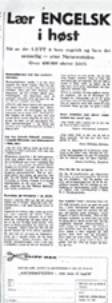
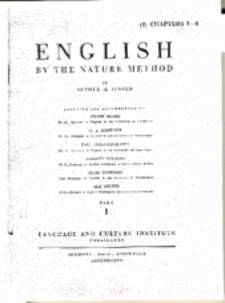
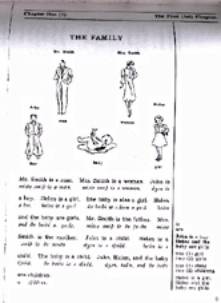
I read with increasing interest that the secret was to read English from the first moment;
that not a single sentence in the course was Norwegian, and not a single word was translated;
that one learned new words and expressions from the context, just as children learn their mother tongue.
Lorentz Eckhoff, professor of English literature at the University of Oslo,
gave the English by the Nature Method course his highest recommendation,
and stated that “its efficiency exceeds all others.”
Thus, it was settled. I was convinced.
Both then, at the age of 13, and since then, as a good adult, I have always relied more on professors than on any other living creatures.
I wanted to start learning English.
Think how much richer my life would be then.
Imagine being able to talk to the tourists who traveled over with the local car ferry.
Imagine for a second you were traveling the world, and already know the language.
Imagine being able to understand what was said on many of the other radio stations I came across while I was searching for the local Vigra transmitter’s signal.
And there were countless more reasons, too, that, yes, I simply had to learn English!
I did not for a moment doubt that I would succeed.
I had already experienced in my 13-year-old life that I had “a better head than most,”
and despite the
Law of Jante being so strong in the consciousness of the locals, I acknowledged my intelligence!
Thus, only two obstacles remained:
First, to convince my father that, despite my young age, and despite my father having had no schooling,
I could still learn something as
I still cut out the coupon from the weekly magazine, stole 30 øre for postage
from my mother’s slender wallet in the small rose-painted basket that hung under the ceiling in the bedroom,
and sent the envelope to Nordisk Språkforlag, Postboks 241, Oslo.
After a few days of endless waiting and excitement, a comprehensive brochure arrived.
The entire course was to consist of 16 study booklets, 740 pages of text over 60 chapters,
an introductory booklet with an explanation of the audio script and three glossaries for safety’s sake.
Correction and guidance would be provided by Associate Professor at the University of Oslo,
R.I. Christophersen.
It all seemed extremely reassuring.
Except that was a lot of money: 78 kroner by cash payment, and 86 in instalments!
I gathered my courage and waited for a convenient time when Dad seemed to be in a satisfied mood.
Then I said it outright, that I wanted to learn English, and had tracked down the ideal course.
Then I listed all the previously mentioned arguments in favor of implementing my study decision,
as well as added some more that I came up with on the go.
Finally, I nervously said what it cost.
Dad must have heard only the last thing.
And the answer, on the contrary, was NO!
Then a few days passed, gloomy days.
I actually cried and did not want to eat.
Imagine having a father who would not help me become a cultured person who could be enabled to live a richer life
and “get a little more air under his wings than it was possible to get on one’s own” in the ragged little village in the Northwest!
But after another couple of days, while I had become even gloomier and almost visibly thinner, there were perhaps signs of an opening.
Dad came, unsolicited, and wondered if it might be possible to get a special agreement with the publisher,
e.g., that I could pay only after each letter sent, because in that case we did not lose the entire amount of 78 or 86 kroner —
which was about a weekly salary for him —
if I did not manage to complete the course, if I had overestimated my own abilities and dropped out already after the first or second letter.
Well, these counter-perceptions were to some extent acceptable.
Admittedly, there was not the smallest risk that I would give up, also according to Professor Eckhoff’s assurances,
but since this was the last resort for financing,
I had to take extra work, and there would be a time delay for Nordisk Språkforlag to request payment for each letter,
as well as not having to pay for a possible balance if I, due to young age and weak prior knowledge, had to interrupt my studies before completing the course.
I thought this would be embarrassing, but, most likely, this would be handled only by some office ladies or finance managers,
and not come to the ear of Professor Eckhoff or Associate Professor Christophersen with CHR and PH.
So then I had to let the shame bite me in order to achieve something really big, to get started learning real English,
“the way the English themselves use the language in everyday speech,” as stated in the brochure.
Besides, the ad stated that “it is young people with buoyancy who will do well in life.”
I was now 13 years old already, so it was high time to begin my buoyancy, I reasoned.
After another short week, a friendly reply letter arrived from Nordisk Språkforlag stating that a special arrangement with regard to payment terms had been granted.
And not only that.
I was the youngest who had booked the course so far, and they were looking forward to an interesting collaboration and “experiment” in that way,
and maybe I could be one of those who offered a statement about the course afterwards.
Thus was I up and running, and my life changed character.
I was in a more serious and binding phase of life somehow!
It ended up that I was kicking football both afternoons and evenings, until it was time to dive straight into bed — except on Wednesdays;
for several years now, on Wednesdays I would listen to
“Storting og styringsverk” on the radio at
21:35.
From now on, there was a time every day for training and another time for studies, both concentrated and intense, not halfway and random!
According to the normal pace of the natural method, letter answers were to be delivered once a month.
This meant that I had to read and understand the text to perfection, as well as answer written Exercises A, B and C in one chapter per week.
The course should go no faster, even if I could do it, because it was important that the material —
all the new words and expressions and the indirect grammar — were “digested.”
The most important thing was “THINKING IN ENGLISH.”
I read each chapter many times, both the silent reading for the comprehension and the reading aloud for the pronunciation.
The audio script was studied to the smallest detail.
This was absolutely necessary, as this was not a language course with 78rpm records, such as Uncle Trygve had used to learn German.
Cassette players and recorders had not yet been invented.
And in a small place such as
Kvanne,
there were no foreigners who spoke the language naturally,
and only a handful of “learned people” who had EXAMEN ARTIUM,
and who, with this enviable quality, could play off some English words when they were home on holiday.
In fact, I had hardly heard English spoken in natural contexts at this time at all.
THE SOUND POWER was therefore for me the alpha and omega, my gateway to “the promised land”!
I still remember very clearly what a wonderful experience it was when I discovered that my idea of the English sounds from the phonology actually corresponded well with reality,
that is, with how Chief Engineer Quande and his Mrs. spoke English.
This highly respected couple had lived in America for many years, and therefore they spoke the language fluently.
After I had read English for four or five months on my own, this elderly couple at their country house
Kråkhammeren [in
Moskenes] found out what young Svorken,
Johan’s son, had embarked on, and therefore invited me to his home.
I was treated to muffins and soft drinks, and asked to read to them from my last study booklet,
and then we spoke together in English, only English for several hours!
There was a click of well-being in my brain, an
A funny apropos to what I still, later on, think was “ingenious” with this Natural Method course,
is that when a study was conducted at the University’s British Institute on the emphasis on audio writing at the various Norwegian high schools,
Orkdal [a municipality in Trøndelag] came out well.
Landsgymnas [a boarding school] came out with an exceptionally flattering result: at the very top!
Admittedly, our eminent English lecturer there, Thomas Monsen,
had placed considerable emphasis on both single sounds and intonation and on phonetics as a useful aid to a good pronunciation,
but it was certainly my earliest self-studies and NATURAL METHOD’s completed use of phonetics that formed the basis for my good test results,
and because in my own teaching I have always later emphasized phonetics and phonetic understanding and practical practice very highly
even in periods where this has not been considered “good Latin” in modern English methodology.
I still believe, almost 50 years after completing the course, and after English undergraduate studies and pedagogy graduate studies,
as well as 35 years as an English teacher at different levels and by different methods and using many different teaching materials,
that English by the Nature Method is unsurpassed as a method!
I really learned “to think in English.”
I talked to myself when I walked along the road or in the woods, or cycled or sat on the toilet.
The idioms, the standing expressions, automatically slipped in and became active vocabulary in an imperceptible way, yes, precisely —
according to the Nature Method!
All this for just over 6 kroner per letter, one every month.
Of course, I had the special clause that I could cancel if I were to fail.
Of course I did not fail with such a thing.
After 16 months of intense, but pleasurable work, I had COMPLETED the course — and even FATHER was SATISFIED, and also a little surprised.
|
If we now betake ourselves to the online US Library of Congress Copyright Office’s Catalog Entries, we make a few discoveries.
The first discovery is that there does not seem ever to have been a US copyright registration for English by the Nature Method.
So far it all seems normal, but then, wait, what’s this?
A Russian course?
Yes, a Russian course.
Russian Language by the Nature Method is how the title translates, or
Russisk efter naturmetoden.
Zo, The Nature Method Center of New York submitted the first two slender staple-bound pamphlets to the Copyright Office in the latter part of 1963,
and the copyright was granted.
How do we know they were slender little staple-bound pamphlets?
Look at the numbers: four lessons per pamphlet! That’s how we know.
A search through the Library of Congress’s
online catalogue makes no mention of this work.
We do, though, get a bit of a delightful surprise when we meander through the
Michigan State University Library’s online catalogue:
Zo, Michigan State University claims to have volume 3 —
that is, pamphlet number 3 — and claims that the volume is checked out,
which is a slight indication that it might actually possess this volume.
This listing constitutes 50% of the evidence I have found that this course was actually published,
and that it was published in the 1960’s, and that it was published by The Nature Method Institute.
Apparently, it was published in Amsterdam, though it seems to have New York on the cover page as a secondary publication office.
Is this the only copy that was ever sold?
For whatever it may be worth,
Google Books also makes a mention of this pamphlet.
On
A Language Learner’s Forum: The Nature Method Institute’s Language Courses,
we see a post from Stairway2kevin, who states:
“Hi all, someone reached out because of my affiliation at Michigan State
and I couldn’t help but get involved.
I promise to be back later with more for everyone
but in the meantime I wanted to drop confirmation [of] the existence of the Russian volume at MSU!”
And drop confirmation he does indeed!
What does this tell us?
With this pamphlet # 3, we now have lessons 9 through 12.
The stamp on the cover states that this is a surplus duplicate copy.
The hastily scrawled X on the bottom would indicate that this pamphlet was removed from the collection.
Okay, fine.
Where is the rest of the collection?
Could it be that this was preserved only by accident, when the main part of the collection was discarded?
Was this sole duplicate volume left behind simply because it had been tossed into the surplus pile?
We know that Arthur Marinus Jensen was born in 1891.
How do we know that?
Simple!
Look above at the title of a book:
Language and Society: Essays Presented to Arthur M. Jensen on His Seventieth Birthday, which was published in 1961.
We learn that he died in 1965.
I am unable to find any obituaries.
The Nature Method Institute continued for some few years after Jensen’s death, and we know that by looking at the following advertisements:
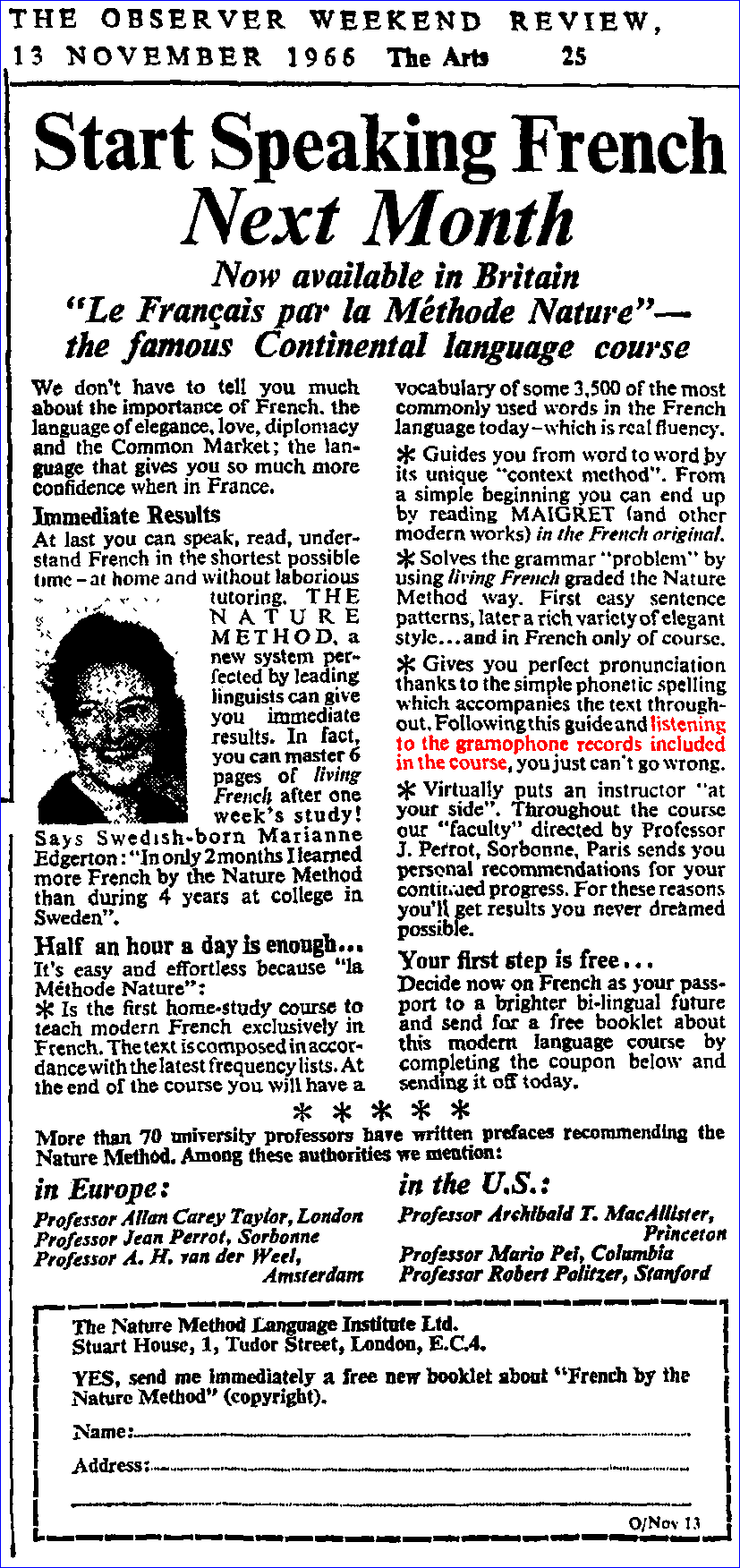
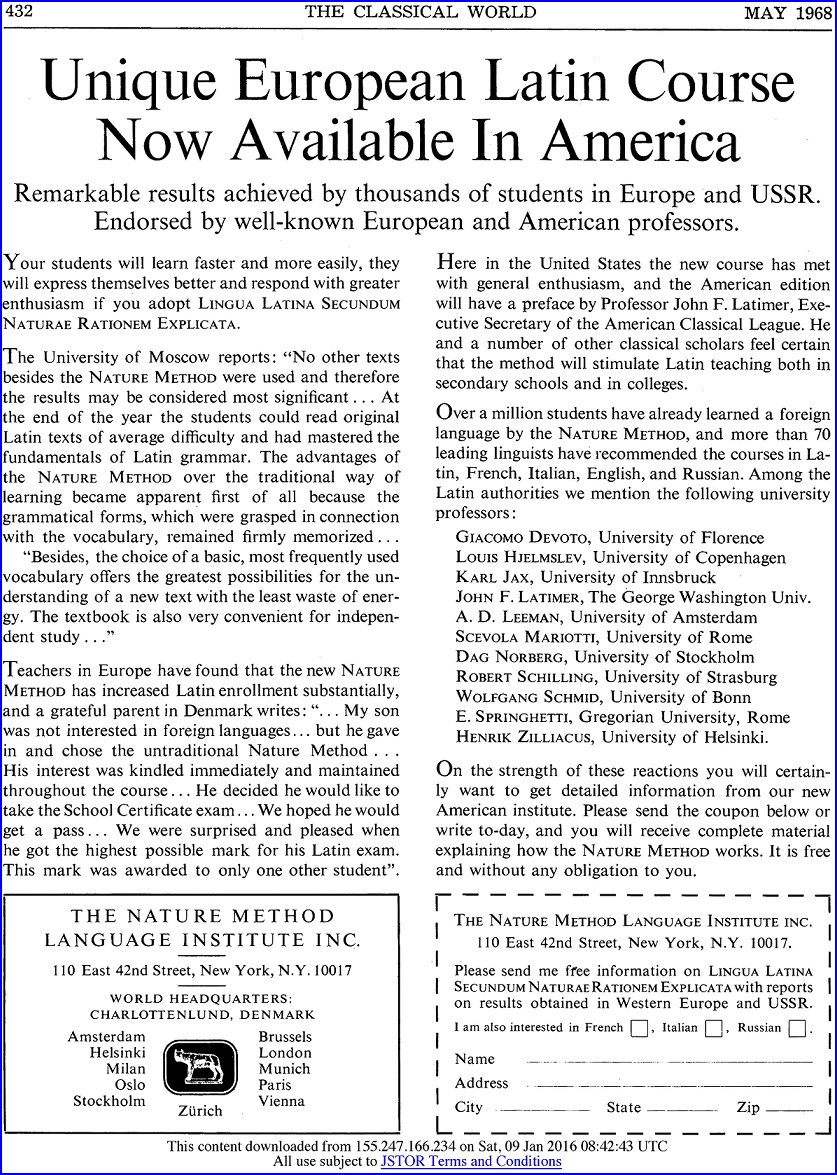
Note that there are four and only four languages offered: Latin, French, Italian, Russian.
Since this advertisement was printed in the US, there was a lesser need to mention the English course.
From this, I assume that this new Manhattan office was offering/publishing four and only four courses:
Latin, French, Italian, Russian.
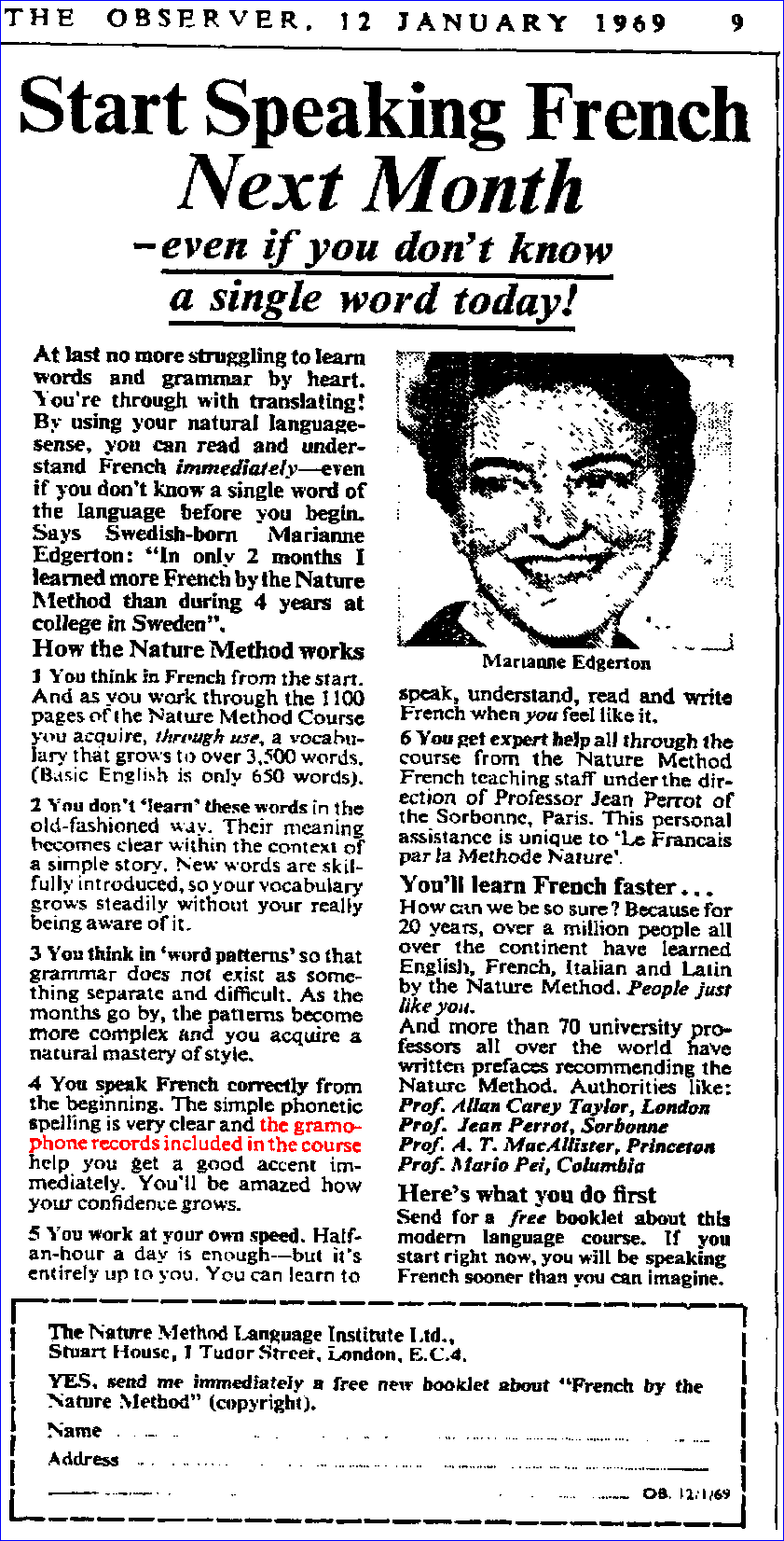
Now, scroll back up and look again at the full-page advertisement in The Classical World.
“Unique European Latin Course Now Available in America.”
What does that tell us?
That tells us that, previous to March or April or May 1968, the Latin course was not available in the US or, perhaps, in any of the Americas.
It would follow that the other courses — English, French, Italian, Russian — had similarly been previously unavailable in the Americas.
Let us explore this New York office.
The particular copy of the English course posted at Archive.org
does not bear a copyright date or a printing date, but the most recent preface is dated 1956. The cover says nothing about New York.
The copy of the July 1958 second printing of the French course posted at
Archive.org
says nothing about New York.
The copy of the Italian course posted on Archive.org
bears a copyright date of 1962, but there is no indication of a printing date.
The cover specifies that there was indeed an office in New York.
The Copyright Entry excerpted above demonstrates that, as of autumn 1963, there was a New York office.
We can safely determine that the New York branch opened after July 1958 and before September 1963,
but that it was probably not distributing any courses in the US.
It was just an address, and may not have even been an office.
It may have been nought more than a mail drop and forwarding service,
and may have been established solely as a legal shortcut to help to secure US copyrights.
Now, suddenly, in spring 1968, the New York branch was making the Latin, French, Italian, and Russian courses available to US customers.
A defunct Danish web site, The Widmann Blog, fills in some of the story.
Widmann quotes from a letter that Ørberg sent to him in May 2001
(an excerpt from Widmann’s piece is included here).
I plugged it into Google Translator and offer the relevant portions:
|
Arthur M. Jensen is the man behind the idea of the nature method, especially inspired by
Otto Jespersen and the ‘direct method’,
but to my knowledge he has never written anything about the theoretical background of the method —
he himself always referred to his preface to the English (and French) course.
He was not able to practice the method to any great extent, for his authorship is probably limited to the introductory,
rather meaningless chapters of ‘English by the Natural Method’;
the rest was, as far as I know, written by his daughter,
Thurid Grièse (and her husband?), and partly by
Knud Schibsbye;
the French course was written by Oleg Koefoed (except for chapters 1–8, for which Thurid Grièse is responsible),
and the Italian and Russian courses were entirely written by Oleg Koefoed.
Still, Arthur M. Jensen is the author of the title page!
He also wanted that on the Latin course, which he had barely read, but I protested against it.
When I presented him with my first draft in 1952, I proposed the title ‘Lingua Latina per se illustrata’,
but that was rejected in favor of ‘Lingua Latina secundum naturae rationem explicata’
(the term ‘nature method’ should be included in the title)....
Arthur M. Jensen was first and foremost a businessman,
and his company, ‘The Nature Method Institutes’, had great success in many European countries,
mainly with the English course.
I was a permanent employee from 1952 to 1961 and was tasked with writing a course in Latin.
When it was completely finished in 1957, I worked with methodical control on Oleg Koefoed’s Italian and Russian courses
in addition to accompanying material and revisions of the Latin.
In 1961, I applied to a high school (Ordrup Gymnasium) and came to Grenå in 1963.
From here, I collaborated with
Erik Hoder and Knud Schibsbye on a much-needed revision of the English course, which did not manage to be completed.
Arthur M. Jensen died in the late 60’s and the company was continued by his younger companion
Erik Hoder, who had long been the real leader.
Erik Hoder died in 1975, and then things went well for the company, which completely ceased during the 80’s.
Therefore, one can probably not get the natural method courses in the modern languages today (the Italian course is especially excellent).
As can be seen, not much was written linguistically about the method, so I gave up writing a thesis on it.
Since that time, however, I have felt that it is a big mistake that there are no Nature Method courses in all languages.
I myself used a similar course to learn Esperanto, ‘Esperanto laŭ Naturmetodo / Esperanto laŭ Metodo Friis’
(the second title was apparently used when Friis discovered he was not allowed to use the trademark ‘Naturmetoden’), and it was also excellent.
|
I suspect there is a typo in the above, for after Hoder’s death, I suppose things did not go well for the company at all!
So now we have what seems to be the answer to the old question:
“Why is it that all the courses went out of print except for the Latin course?”
Answer: Ørberg protected himself and his work.
He was proud and protective of his baby, and he demanded credit, whereas Thurid Grièse
(1916–198?) and Knud Schibsbye (1904–1982)
just let go and remained anonymous when it came to the English course.
Grièse and Koefoed (1921–1999) did not demand credit for the French course.
Koefoed did not demand credit for his Italian course.
It was only Jensen’s name that appeared prominently on the covers, as author of the English course and as editor of the French and Italian courses.
The true authors were anonymous.
Perhaps Grièse, Schibsbye, and Koefoed had good reason not to care.
Perhaps they had been burned and wanted nothing more to do with the Nature Method,
or, perhaps, they contractually were not permitted to claim credit or ownership.
I do not know.
Koefoed did, though, demand credit for his Russian course,
and Grièse did get primary credit on
her children’s English course.
When the Institute folded, the authors, with but a single notable exception, did not reclaim their works, but just let them rot.
The Nature Method Institute seems to have published its last volume sometime around 1977.
That was a reprint of the Latin course, not in its original four hardbound volumes,
but in a series of a dozen or more small staple-bound pamphlets.
Ørberg says that The Nature Method Institute continued to sometime in the 1980’s.
Then it closed up shop.
It just disappeared.
It simply vanished without a trace.
Evaporated.
Apparently, as we discover from Archive.org,
the copyright to the English course has lapsed into the public domain,
and the same fate has befallen the
French course.
Since Archive.org also hosts the Italian course,
we can safely assume that is in the public domain as well.
The French and Italian courses are only just recently back in print through Pattern Media LLC,
as you can see here.
Since the new publications do not include the audio recordings, I assume that Pattern Media simply copied the online versions.
Yes, copyright laws in the US are different from copyright laws in other countries, and they have changed dramatically over the past several decades.
A work published in 1939 or or 1954 or 1955 or 1962 or 1964 would have been protected by the Copyright Act of 1909, and could easily have fallen into the public domain.
By the Copyright Act of 1909, copyright was 28 years renewable only for a further 28 years.
If the copyright was not renewed, that was the end of that.
In about 1995, the Disney Corporation rewrote the US laws in order to protect its trademark.
So now US copyright laws work differently: Copyright lasts an absurdly long amount of time, well past the demise of the great-grandchildren,
and, for newer works, copyright will stick and it has teeth.
According to the new laws, certain public-domain works can actually fall back into copyright!
Preposterous but true.
I am not a legal expert, but, since nothing about The Nature Method courses threatens Disney, I don’t think that these courses could possibly be protected again.
In Europe, as far as I know, copyright lasts 70 years past the author’s death.
Hans Henning Ørberg passed away in 2010, which would mean that his copyright to the Latin course would extend until 2080.
Unlike The Nature Method Institute, and unlike Grièse, Schibsbye, and Koefoed, Ørberg would not allow his work to be orphaned.
Upon the demise of The Nature Method Institute, he reclaimed his work and revised it several times, thus securing its copyright protection.
He changed the title to Lingua Latina per se illustrata, and he continued to sell it through Domus Latina,
which was simply the name of the office in his home in the suburbs of Grenå.
Domus Latina
Skovvangen 7
DK-8500 Grenå
Denmark
Tel. +45 86321958
orberg@lingua-latina.dk
IBAN: DK43 3000 0005 0597 04
Skovvangen 7
DK-8500 Grenå
Denmark
Tel. +45 86321958
orberg@lingua-latina.dk
IBAN: DK43 3000 0005 0597 04
He maintained a web site to his dying day, and you can see a copy of it
here.
Since he paid for his web domain in advance, his site was still active at least through
12 May 2012.
Not long afterwards, his domain expired.
I tried reaching it several times, several years ago and again several days ago, but got a 404 error message every time.
That is when I concluded that his business had folded upon his demise, and that his course was likely either in the public domain or legally orphaned.
But then, miracle of miracles, I see that it is up and running again — and that it has been up and running all along!
Take a look: Lingva Latina per se illvstrata.
I wonder who’s in charge these days.
Interestingly, Logos,
a Bible-and-Church-Fathers software company, offers a digital edition of Lingua Latina per se illustrata.
There is even a Domus Latina YouTube Channel!
(There is also a Domus Latina Facebook page, but it is entirely unrelated.)
Ørberg licensed US/Canadian rights to his new edition to:
Focus Publishing
R. Pullins Company
PO Box 369
Newburyport MA 01950
Phone (800) 848-7236
pullins@pullins.com
www.pullins.com
R. Pullins Company
PO Box 369
Newburyport MA 01950
Phone (800) 848-7236
pullins@pullins.com
www.pullins.com
In
1981,
the Museum Tusculanum in Heidelberg reissued Ørberg’s Lingua Latina per se illustrata,
and, apparently, this is authorized by Domus Latina!
It was probably in
2012
that Cultura Clasica of Granada licensed it from Domus Latina!
Apparently, other firms around the world did the same.
I begin to think now that this course may well be protected by copyright!
As far as I know, the US copyright to the original 1955–1957 course was not renewed,
but it seems that the revised edition has its own separate copyright.
In November 2014,
Hackett Publishing Company
purchased Focus Publishing and continues to offer Lingua Latina per se illustrata,
but, inexplicably, without the audio recordings.
Or, wait, does it have those audio recordings after all?
Take a look at this YouTube page!
The pronunciation is sort of okay; it doesn’t distinguish between long and short vowels, but it’s okay.
I bet that’s Hans Ørberg’s voice.
Here’s a review of Lingua Latina per se illustrata by Luke of Polymathy.
(Luke is one of those rare lucky people who was given the really simple tools to carve his own way through his life.
When we’re given those tools in early youth, everything in life is so easy.
Few of us are ever given those tools.)
Here’s a nice review.
So, my heavens, Domus Latina is alive and well and thriving!
One branch of The Nature Method Institute continued past 1977, though.
That was the Swedish branch, but it was not called Nordiska Sprak- och Kulturförlaget.
Puzzlingly, it was, again,
NaturMetoden Språkinstitut,
the name used for Karlgren’s book on Chinese writing.
It was no longer based in Stockholm, but in far-away Eslöv.
Was this really still a branch?
I bet it was just some Swedish guy who acquired all the left-over stock at a bargain price
and earned some occasional pocket change by selling it off, piece by piece.
Let’s look at the remnants of its web page from 2004, still online as of 2010:
The mailing address is a post-office box, and the email address is dead.
From web searches, we can discover the physical address:
Klövervägen 12, 241 35 Eslöv, which is indeed a house.
We discover that this iteration of The Nature Method Institute was also selling
a German (“tyska”) course as well as a Spanish (“spanska”) course:
Deutsch nach der naturmethode and, presumably, Español por el método de la naturaleza.
Were they comparable to the earlier Nature Method courses?
Enquiring minds want to know.
Whatever they were, they and the Nature Method courses in English, French, Italian, and Latin
were still being offered as recently as 2010.
The Russian course was surely forever out of stock.
Zo, now we know the name of the author:
Georg Rona, assisted by Jörgen Bak.
The publishing house seems to be Das Sprachlehrinstitut or something like that, though most of the name is occulted.
For what it is worth, here is a print ad, presumably from about the same time:
I do not know the date or the provenance of the above advertisement,
but we do see that it includes German (Tyska) and Spanish (Spanska), and it, too, is missing Russian.
From the advertisements reproduced above, as well as from the clips from the US Copyright Entries,
the only conclusion that one can draw is that the Spanish and German courses were published sometime after 1968,
that they were published outside of the US, and that they were never submitted to the US Copyright Office.
Perhaps Jensen planned them, perhaps he oversaw the first few lessons of each,
but, really, I strongly doubt that he had anything to do with them at all.
They were created after his demise, under the supervision of his successor, Erik Hoder; that is what I suspect.
Are they any good? Heaven only knows. I would love to see them and purchase them.
On a chat called “The Nature Method Institute’s Language Courses,”
posted at A Language Learner’s Forum, a poster called indeclinable explained on 22 November 2018:
“The Spanish one was never finished; as far as I’m aware they only made 10 chapters or so. But I have never seen it.
The German one is supposedly complete; if anyone can locate it I’d be eternally grateful.”
We do not know when, but surely sometime between 1977 and 2013,
the Humboldt Fernlehr Institut republished Jensen’s English course, complete with the audio recordings. Behold:

We are then stunned to discover that the Humboldt Fernlehr Institut also published
Русский
язык
по
методу
Натура (Russian Language by the Nature Method)!!!!!
We may never have known about this edition had it not been for an online vendor who posted images of this course:
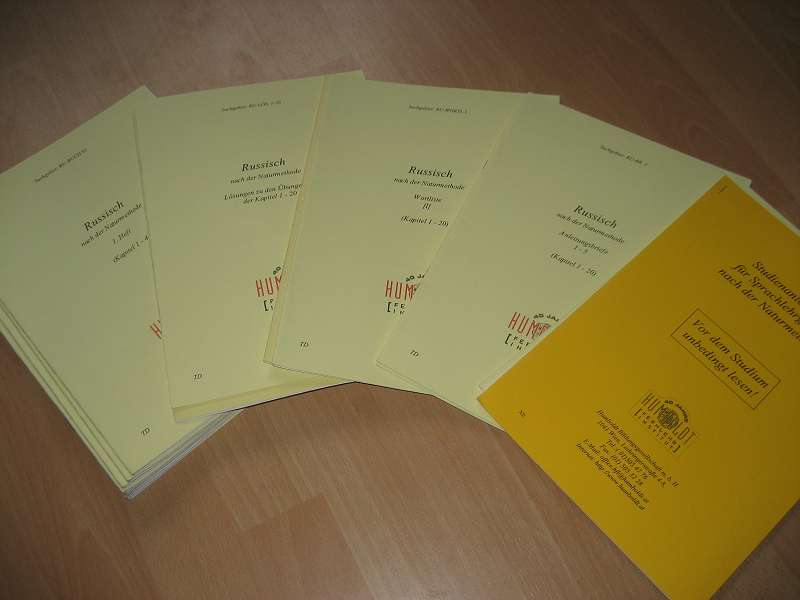

Note that the accompanying CD’s have a different title: Русский язык по прямому методу (Russian Language by the Natural Method). That is surely just a typo. These CD’s belong to the Naturmethode course.
The vendor also showed us a sample of the inside of the course,
and, yes, this is definitely the Nature Method:
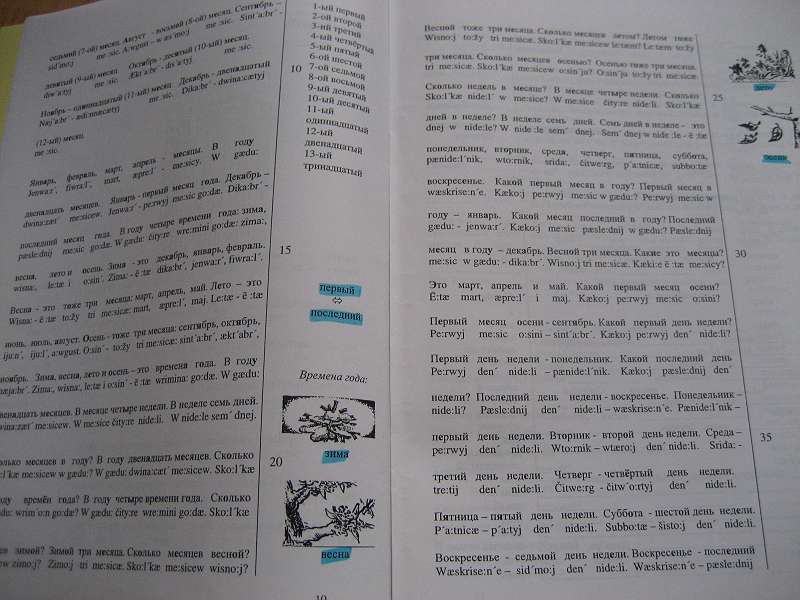
A tease: pages 10 and 11 of the first pamphlet, as issued by Humboldt.
Hopes were raised when Alexandr Pek posted the following video on YouTube,
but don’t get your hopes too high, because there is a problem here:
Where on earth did that come from?
Well, the YouTuber who posted this, Alexandr Pek, says that this is merely lesson 4 of the Italian course, which he translated into Russian.
Back to the old drawing board....
As you can see, people have been searching desperately for this Russian by the Nature Method course.
For example, you can read the pleas at
How-to-Learn-Any-Language.com,
Ruso en León,
at “The Nature Method Institute’s Language Courses,”
and at “‘The Natural Method’ series (Le français par la méthode nature, et al.).”
Nobody has been able to find it.
The Humboldt Fernlehr Institut in 2017
reorganized as the Humboldt Matura-Schule,
but the new organization knows nothing about the old Russian course.
Caveat emptor: Pay attention to what galaxyrocker posted at
“The Nature Method Institute’s Language Courses,”
A Language Learner’s Forum, on 22 November 2018:
“...the Humboldt Institute’s knock-offs, which apparently aren’t good at all....”
What does that mean?
Further examination reveals the problem:
|
By the way, “Chinesisch nach der Naturmethode” at Humboldt
is a trickery and not Nature Method at all;
it is concocted very like Assimil with parallel sentences.
And spanish is very weak.
The rest is just old “Naturmetodens Sproginsitut” courses.
|
Now that we’re on the topic, here is a reference to
Spanisch nach der Naturmethode,
and here is a reference to
Italienisch nach der Naturmethode,
and here is a reference to
Französisch nach der Naturmethode.
Who wrote Humboldt’s
Türkisch nach der Naturmethode?
Is this the Nature Method Spanish course,
or is it Humboldt’s, or is it somebody else’s?
Whatever it is,
here are the six known audiocassettes, allegedly held at the Badische Landesbibliothek, 76133 Karlsruhe.
Is there any place else we can look?
Well, if you have a LinkedIn account, you can discover
someone who learned Russian via the Humboldt edition of this course.
Maybe she still has her copy?
There are three web sites that might provide us with some clues:
|
•
Fernstudium-Infos.de > Foren > Fernstudium Forum > Russisch:
This online conversation reveals aenny’s post of 21 January 2010,
in which he states, definitively, that
Russisch nach der Naturmethode is not available anywhere in Germany.
• Russisch nach der Naturmethode (Zertifikat) — Humboldt Fernlehr Institut: This is a • “Natural method for Russian,” How-to-Learn-Any-Language, shows a post from glossa.passion, who wrote on 10 November 2013 that the course was still available from Humboldt in Austria. |
To find a copy of the Russian course, perhaps it would be a good idea to trace the author.
According to the Library of Congress, the author of Russian by the Nature Method was one Oleg Andreevich Objedof-Koefoed.
When we do searches on his name, we have little luck, but we find that he also published a
pamphlet on the Russian alphabet:
We can see that this little pamphlet, also, uses the term “Nature Method” in its title.
Perhaps this was extracted from his course of three decades previous?
Also, we can make out the author’s name,
and here the two surnames are reversed: The result is spelled Koefoed-Objedoff, with a doubled F.
Note that, though Koefoed is a Danish surname, Oleg, Andreevich, and Objedoff are all Russian names.
When we plug in the name with this different spelling, we learn that he generally did not use Objedoff.
Take a look: Oleg Koefoed, 2 February 1921 – 3 December 1999.
This remarkable web page informs us that his dad was a state consul named Carl Andreas Koefoed, and that his mother was Elisabeth (who I presume was Russian).
Oleg worked at the Romance Institute in Copenhagen, where he taught semiotics and foreign language(s?).
On 2 September 1949 he married Anne Kirstine Nissen (born 4 August 1922), and they divorced in 1961.
He remarried on 23 November 1962, this time to Else Drescher, a civil engineer (born 18 March 1930).
He had a bit part in a movie called
Peter’s Baby (1961), and you can buy the Danish DVD, too.
Oleg died in Montepellier.
With this information in hand, we can do an exploration.
Remember, when you want to find something that’s unknown,
the first thing to do is to look for what is known.
So, here are the known items, and, judging from my doleful experiences with libraries and archives and publishers,
I would assume that the vast majority of these no longer exist in any form anywhere in the world,
since the publishers probably discarded all the elements once sales dropped,
and as the libraries and archives probably “weeded” them from their collections since nobody asked to see the items for five years straight,
and since “nobody has tape players anymore.”
Yup, those are the new triggers:
If nobody checks out an item for five years,
or if nobody asks to see it for five years,
or if it is on a medium that cannot be played on brand-new equipment,
out it goes into the dumpster, without pity, without a second thought.
That is how our history is vanishing right before our eyes.
That’s what happens. Really. I’m not joking.
If I were king, such destruction would be a capital offense.
Anyway, here goes; here’s what we know about:
|
Oleg Koefoed, L’oeuvre littéraire de Jean-Paul Sartre
(Copenhagen: Gyldendal, 1948–1949)
Oleg Koefoed, Bibliographie [Jean-Paul Sartre] (Copenhagen: Gyldendal, 1949) Oleg Koefoed, Opdragelse til kommunisme (Copenhagen: 1951) Oleg Koefoed and Peer Lauritzen, La France au micro: Vie et aventures de M. Alfred Filloux ou “Le français tel qu’on le parle” (Copenhagen: Schultz, 1953) Oleg Koefoed and Peer Lauritzen, La France au Micro II: Chroniques de Bourgville: Fransk for viderekomne (Copenhagen: 1954) Jean-Paul Sartre, Oleg Koefoed, and Anne Koefoed, Les faux nez. Lystspil 1-3 [audiotape] (Copenhagen: Danmarks Radio, 1957) Anne Koefoed and Oleg Koefoed, La farce de Maitre Pathelin 1 [audiotape] (Copenhagen: Danmarks Radio, 1958) Anne Koefoed and Oleg Koefoed, La farce de Maitre Pathelin 2 [audiotape] (Copenhagen: Danmarks Radio, 1958) Anne Koefoed and Oleg Koefoed, La farce de Maitre Pathelin 3 [audiotape] (Copenhagen: Danmarks Radio, 1958) Anne Koefoed and Oleg Koefoed, La farce de Maitre Pathelin 4 [audiotape] (Copenhagen: Danmarks Radio, 1958) Oleg Koefoed, La Littérature danoise en 1957: par Håkon Stangerup,... [Traduit du danois par Oleg Koefoed] (Copenhagen: Litteraturudvalget, Samvirkerådet for dansk kulturarbejde i udlandet, 1958) Håkon Strangerup, La littérature danoise en 1958 [Traduit du danois par Oleg Koefoed] (Copenhagen: Litteraturudvalget, 1959) Håkon Stangerup, La Littérature danoise en... 1959, Par Håkon Stangerup Traduit par Oleg Koefoed (Copenhagen: Samvirkeradet for dansk kulturarbejde i udlandet, 1959) Oleg Koefoed and Anne Koefoed, Rapsodie Parisienne 1-3 (Copenhagen: Danmarks Radio, 1959) H. C. Hansen, Håkon Stangerup, François Marchetti, Oleg Koefoed, et alia, Culture danoise en France 1920–1960: un livre à la mémoire de Helge Wamberg (Copenhagen: Impr. Bianco Luno, 1960) Oleg Koefoed, Besøg i Sovjet 1: Dagligliv i Rusland [audiotape] (Copenhagen: Danmarks Radio, 1961) Oleg Koefoed, Besøg i Sovjet 2: Russerne og teknikken [audiotape] (Copenhagen: Danmarks Radio, 1961) Oleg Koefoed, Le billet voyageur 1: Lacitrouille compose und chanson [audiotape] (Copenhagen: Danmarks Radio, 1963) Oleg Koefoed, Le billet voyageur 2 [audiotape] (Copenhagen: Danmarks Radio, 1963) Oleg Koefoed, Le billet voyageur 3 Lacitrouille et le professeur Bistouri [audiotape] (Copenhagen: Danmarks Radio, 1963) Oleg Koefoed, Le billet voyageur 4 Lacitrouille chez le marchand døanimaux [audiotape] (Copenhagen: Danmarks Radio, 1963) Oleg Koefoed, Le billet voyageur 5 Lacitrouille et lþavare [audiotape] (Copenhagen: Danmarks Radio, 1963) Oleg Koefoed, Le billet voyageur 6 Lacitrouille et les gangsters [audiotape] (Copenhagen: Danmarks Radio, 1963) Oleg Koefoed, Le billet voyageur 7: Lacitrouille en prison [audiotape] (Copenhagen: Danmarks Radio, 1963) Oleg Koefoed, Le billet voyageur 8: Le triomphe de Lacitrouille [audiotape] (Copenhagen: Danmarks Radio, 1963) Oleg Koefoed, La Littérature danois en ... 1963, Par Niels E. Barfoed Traduit par Oleg Koefoed (Copenhagen: Samvirkeradet for dansk kulturarbejde i udlandet, 1964) Oleg Koefoed, Franske oversættelsesopgaver. 1. Grundserie, september 1966: En samling stile til brug ved undervisningen i skriftlig udtryksfærdighed: Fremkommet ved bidrag fra lærerne i fransk ved Københavns og Århus universiteter (Copenhagen: København Universitets Fond til Tilvejebringelse af Læremidle, 1966) Oleg Koefoed, Ulf Clausen, and Peer Lauritzen, Le français sans soucis: fransk for begyndere (Copenhagen: 1967) Oleg Koefoed, Programme d’entrainement pour l’étude de la syntaxe du francais moderne (Copenhagen: Københavns Universitets Fond til Tilvejebringelse af Læremidler, 1967) Oleg Koefoed, Programme d’entrainement pour l’étude de la syntaxe du francais moderne, composé sur la base de Knud Togeby: Fransk (Copenhagen: Statens trykningskontor, 1967) Oleg Koefoed, Programme d’entrainement pour l’étude de la syntaxe du français moderne: Sur la base de Knud Togeby: Fransk grammatik: 1. série: Les prepositions (Copenhagen: 1967) Oleg Koefoed, Le français sans soucis. Suppl.: Fransk for begyndere : Ordlister og grammatik. 2. opl. (Copenhagen: J.H. Schultz, 1967) Else Koefoed and Oleg Koefoed, Séminaire de pédagogie, automne 1973 (Copenhagen: Københavns Universitet, Romansk Institut, 1973) Oleg Koefoed, Ebauche d’un modèle gænæral des systèmes verbaux suivi d’une atatomie du système verbal français (1973) Oleg Koefoed, “Le Verbe comme objet d’étude : aperçu historique des études verbales, domaine non subjonctif, dans un certain nombre de langues,” Revue romane. Numéro spéécial, 17 (Copenhagen: Akademisk Forlag, 1979) Eva Bertram, Oleg Koefoed, and Hanne Korzen, Øvelser i elementær sætningsanalyse (fransk) (Copenhagen: Københavns Universitet, Romansk Institut, 1981) Oleg Koefoed, ‘La Serrure’ de Jean Tardieu: essai d’analyse sémiotique (Copenhagen: Romansk Institut, Københavns Universitet, 1981) Oleg Koefoed, Noget om semiotik : en indføring i de semiotiske beskrivelsesmetoder (Copenhagen: Romansk Institut, Københavns Universitet, 1981) Oleg Koefoed, Noget om verbalia (bidrag til en beskrivelse af det franske verbalsystem) (Copenhagen: Romansk Institut, Københavns Universitet, 1984) Oleg Koefoed, Noget om dramasemiotik: en indføring i den semiotiske analyse af spillet og skrevet dramatik (Copenhagen: Romansk Institut, Københavns Universitet, 1985) Oleg Koefoed, Noget om tekster: (en indføring i fortolkning af skrevne ordsekvenser på semiotisk grundlag) (Copenhagen: Romansk Institut, Københavns universitet, 1987) Oleg Koefoed, Teksteksempler (Copenhagen: Romansk Institut, Københavns Universitet, 1987) Oleg Koefoed, Noget om tekster. 2. Teksteksempler (Copenhagen: Romansk Institut, Københavns Universitet, 1987) Oleg Koefoed, Noget om reklamesemiotik: en indføring i reklameanalyse på semiotisk grundlag (Copenhagen: Romansk Institut, Københavns Universitet, 1987) Oleg Koefoed, Noget om oversættelsesteori (Copenhagen: Romansk Institut, 1989) Oleg Koefoed, Noget om oversættelsesproblemer: materiale til kontrastive studier omkring dansk-fransk problematikken (Copenhagen: Romansk Institut, Københavns Universitet, 1989) |
His last known work is from 1989, which is not that long ago.
The Romansk Institut still exists.
+45 35328600, engerom@hum.ku.dk.
If you can speak Danish, ring them up and ask how to trace his family and his heirs.
Actually, you don’t even need to speak Danish, since this Institute is devoted in part to English.
There is another Oleg Koefoed currently teaching at Københavns Universitet,
but whether he is a relation or a coincidental namesake, I cannot guess. Might be a grandson or a nephew.
For what it’s worth, a Hans Anton Koefoed
(1922–1997,
a senior lecturer at the University of Southern Denmark in Odense) penned
Teach Yourself Danish, and he may or may not have been a relation.
Plenty of people are trying to learn something about The Nature Method Institute, but the trail is cold.
How cold is it?
Probably not all that cold.
We can look at the sparse printed material and we find names, names, names. When we check Jensen’s first course, from 1939, the one for English, we find these endorsements on the cover:
Simone Rosalie Thérèse Odile D’Ardenne (1899–1986), University of Liège
Franze de Backer (1891–1961), University of Ghent
Frank Behre (1896–1981), University of Gothenburg
Hellmut Bock (1897–1962), University of Kiel
Carl Adolf Gottlieb Bodelsen (1894–1978), University of Copenhagen
Georges Bonnard (1886–1967), University of Lausanne
Karl Brunner (1887–1965), University of Innsbruck
Lorentz Julius Holtermann Eckhoff (1884–1974), University of Oslo
Otto Funke (1885–1973), University of Berne
Pieter Nicolaas Ubbo Harting (1892–1970), University of Amsterdam
Otto Jespersen (1860–1943), University of Copenhagen
Bogislav Von Lindheim (1910–1971), Free University of Berlin
Henry Lüdeke (1889–1962), University of Basle
Fernand Mossé (1892–1956), Collège de France
Ole Roger Reuter (1906–2003), University of Helsingfors
Knud Schibsbye (1904–1982), University of Copenhagen
Frederik Theodoor Visser (1886–1976), University of Nijmegen
Max Wildi (1904–1982), Institute of Technology, Zurich
Reinard Willem Zandvoort (1894–1990), University of Groningen
Franze de Backer (1891–1961), University of Ghent
Frank Behre (1896–1981), University of Gothenburg
Hellmut Bock (1897–1962), University of Kiel
Carl Adolf Gottlieb Bodelsen (1894–1978), University of Copenhagen
Georges Bonnard (1886–1967), University of Lausanne
Karl Brunner (1887–1965), University of Innsbruck
Lorentz Julius Holtermann Eckhoff (1884–1974), University of Oslo
Otto Funke (1885–1973), University of Berne
Pieter Nicolaas Ubbo Harting (1892–1970), University of Amsterdam
Otto Jespersen (1860–1943), University of Copenhagen
Bogislav Von Lindheim (1910–1971), Free University of Berlin
Henry Lüdeke (1889–1962), University of Basle
Fernand Mossé (1892–1956), Collège de France
Ole Roger Reuter (1906–2003), University of Helsingfors
Knud Schibsbye (1904–1982), University of Copenhagen
Frederik Theodoor Visser (1886–1976), University of Nijmegen
Max Wildi (1904–1982), Institute of Technology, Zurich
Reinard Willem Zandvoort (1894–1990), University of Groningen
The advertisements provide us with other names associated with the English course:
Frank Behre (1896–1981), Göteborgs Universitet
Ottomar Krasunsky [please write to me if you can identify him; thanks!],
Hochschule für Welthandel Wien
Giuliano Bonfante (1904–2005), Università di Genova
Carlo Tagliavini (1903–1982), Università di Padova
Ottomar Krasunsky [please write to me if you can identify him; thanks!],
Hochschule für Welthandel Wien
Giuliano Bonfante (1904–2005), Università di Genova
Carlo Tagliavini (1903–1982), Università di Padova
When we look at the front cover of the French course, we discover that several professors provided their endorsements:
M. Theodor Elwert (1906–1997), Université de Mayence
M. Paul Falk (1894–1974), Université d’Upsal
M. Bengt Hasselrot (1910–1974), Université d’Upsal
M. Mario Pei (1901–1978), Université de Columbia
M. Carlo Pellegrini (1889–1985), Université de Florence
M. Emilio G. Peruzzi (1924–2009), Université de Washington
M. Holger Sten (1907–1971), Université de Copenhague
M. Hans Sørensen (1908–2003), Université de Copenhague
M. Veikko Väänänen (1905–1997), Université d’Helsingfors
M. Adriaan Hendrik van der Weel (1895–1976), Université d’Amsterdam
M. Paul Falk (1894–1974), Université d’Upsal
M. Bengt Hasselrot (1910–1974), Université d’Upsal
M. Mario Pei (1901–1978), Université de Columbia
M. Carlo Pellegrini (1889–1985), Université de Florence
M. Emilio G. Peruzzi (1924–2009), Université de Washington
M. Holger Sten (1907–1971), Université de Copenhague
M. Hans Sørensen (1908–2003), Université de Copenhague
M. Veikko Väänänen (1905–1997), Université d’Helsingfors
M. Adriaan Hendrik van der Weel (1895–1976), Université d’Amsterdam
Scroll back up to the advertisements in The Observer and you will find a few more names:
Professor Allan Carey Taylor (1905–1975), London
Professor Jean Perrot (1925–2011), Sorbonne
Professor Archibald Thomas MacAllister (1905–1966), Princeton
Professor Robert Politzer (1921–1998), Stanford
Professor Jean Perrot (1925–2011), Sorbonne
Professor Archibald Thomas MacAllister (1905–1966), Princeton
Professor Robert Politzer (1921–1998), Stanford
The Italian course had front-cover endorsements by three professors:
Bruno Migliorini (1896–1975), Università di Firenze
Giovanni Nencioni (1911–2008), Università di Firenze
Alfredo Schiaffini (1895–1971), Università di Roma
Giovanni Nencioni (1911–2008), Università di Firenze
Alfredo Schiaffini (1895–1971), Università di Roma
The Latin course by
Hans Henning Ørberg (1920–2010)
includes front-cover endorsements from the following professors:
Giacomo Devoto (1897–1974), Univ. Florentinae
Karl Jax (1885–1968), Univ. Aenipontanae
Scevola Mariotti (1920–2000), Univ. Romanae
Robert Schilling (1913–2004), Univ. Argentoratensis
Emilio “Aemilius” Springhetti (1913–1976), Pontif. Univ. Gregorianae
Louis Hjelmslev (1899–1965), Univ. Hauniensis
Anton Daniël Leeman (1921–2010), Univ. Amstelodamensis
Dag Ludvig Norberg (1909–1996), Univ. Holmiensis
Wolfgang Schmid (1913–1980), Univ. Bonnensis
Henrik Zilliacus (1908–1992), Univ. Helsingiensis
John Francis Latimer (1903–1991), Univ. George Washington
Karl Jax (1885–1968), Univ. Aenipontanae
Scevola Mariotti (1920–2000), Univ. Romanae
Robert Schilling (1913–2004), Univ. Argentoratensis
Emilio “Aemilius” Springhetti (1913–1976), Pontif. Univ. Gregorianae
Louis Hjelmslev (1899–1965), Univ. Hauniensis
Anton Daniël Leeman (1921–2010), Univ. Amstelodamensis
Dag Ludvig Norberg (1909–1996), Univ. Holmiensis
Wolfgang Schmid (1913–1980), Univ. Bonnensis
Henrik Zilliacus (1908–1992), Univ. Helsingiensis
John Francis Latimer (1903–1991), Univ. George Washington
Another clue? Why not? Here goes:
Yet another clue? Sure.
Louis Hjelmslev (1899–1965) of the University of Copenhagen penned an article entitled
“Some Reflexions on Practice and Theory
in Structural Semantics,”
Médiations Sémiotiques, 1961.
Wrote Hjelmslev:
|
English (and presumably some other languages) by the Nature Method
and the linguistic theory known as Glossematics were worked out simultaneously
and independently of each other; the authors were not mutually acquainted at the time. It was not until after World War II that I
came to know English by the Nature Method. Shortly afterwards, in Sweden,
Arthur M. Jensen confided to me that he had recently been reading
my
Prolegomena to a Theory of Language and had been giving them a good
deal of thought; this event, incidentally, had taken place on the peak of
a Norwegian mountain. The comments he made were so sophisticated,
and the questions he brought up were so much to the point, that I could
hardly imagine a reader with a better understanding, nor with a more
personal insight into the crucial problems.
|
Zo, we now have the names of a number of Jensen’s colleagues, all deceased, some of them only recently deceased.
We can trace some of their children or other descendants, who may know where books and recordings are buried.
They may know the copyright situations.
Are we getting somewhere?
Probabably.
We do not know who authored the Spanish and German courses, which nobody on earth has been able to locate.
We do not know when they were published, though they were available in 2010 —
certainly
the German course was still available.
That is the sticking point, and I have made no progress at all.
I wonder if they were even proper Nature Method courses.
As for Oleg Andrejevich Koefoed-Objedoff, we have the names of his two wives and perhaps a grandchild or nephew,
as well as the name of his employer and publisher.
And if you buy the DVD, you can even see what he looked like in 1961.
If we add this to the micro-information about Jensen himself,
and toss it together with the information about Jensen’s colleagues, we might find ourselves on the right track.
Better yet, the Jensen/Grièse family tree is posted here,
and anyone who speaks Danish should be able to trace descendants.
Erik Hoder died in 1975, but nothing is posted at his memorial.
Still, though, if you are in France or Denmark, you should probably not need more than three or four days to trace down his descendants.
In the meantime, for those who simply cannot wait, there is a Russian course, still in print in Russia, which I understand is
roughly comparable to Jensen’s method;
namely, Miller and Politova’s multivolume
Жили Были... (Once upon a Time...).
I also found these:
https://www.fluentu.com/blog/russian/russian-readers/
and https://www.fluentu.com/blog/russian/best-books-to-learn-russian/
and https://forum.duolingo.com/comment/11926430/Can-anyone-recommend-easy-Russian-books
and https://www.linguajunkie.com/russian-learning-textbooks.
We also have Ilya Frank’s courses:
http://english.franklang.ru/index.php/russian/13-russian-through-real-stories.
and https://www.fluentu.com/blog/russian/best-books-to-learn-russian/
and https://forum.duolingo.com/comment/11926430/Can-anyone-recommend-easy-Russian-books
and https://www.linguajunkie.com/russian-learning-textbooks.
We also have Ilya Frank’s courses:
http://english.franklang.ru/index.php/russian/13-russian-through-real-stories.
In addition, we have Marianna Avery’s Сорока (Soroka)
children’s books,
as well as Stanislav Chernyshov’s Поехали! (Poekhali!) books.
There is a new course entitled
Дорога в Россию (The Way to Russia)
by V.E. Antonova, M.M. Nakhabina, and M.V. Safronova, too.
There is also Ignaty Dyakov’s series of books,
Рассказ Сенсация (The Story of Sensation),
Рассказ Провокация (The Story of Provocation), and
Рассказ Канонизация (The Story of Canonisation),
to which learners sing praises.
Still, though, darn it, I want to find Uncle Oleg’s course!
For fun, you might also wish to take a glance at YouTube,
which offers readings from English by the Nature Method,
readings from Le Français par la «Méthode Nature»,
and readings from the first and second lessons of
L’ Italiano secondo il «metodo natura».
There’s other fun stuff, too,
and yet more.
Interestingly, there was a short-lived attempt to create a “Nature Method”-like course for Attic Greek.
It was by Dr. Seumas MacDhòmhnaill
(or Macdonald), but he only got as far as the first lesson:
Ἡ πάλαι γλῶττα ἡ Ἑλληνικὴ, κατὰ τὸν αὐτὸμορφον τρόπον.
He ceased after that first chapter because,
if I am reading between the lines correctly, he wishes to clear this with The Nature Method and/or the Domus Latina copyright holders.
MacDhòmhnaill also got as far as
Lesson 12 in his translation of Ørberg’s Latin course into Attic Greek.
Writes he: “I find working from the Latin directly to the Greek quite good actually, they are close enough that it helps me craft better Greek.”
but he stopped, because he has been unable to clear the copyright.
“The main demotivating factor is having heard nothing from an email I directed to Domus Latina about translation rights.
Because it is a direct translation, I worry about copyright, which is why so little of it has been made public here.
It’s hard for me to invest in such a large project with no guarantee that I could release it without fear of litigation.”
A justified fear.
Let’s see what we can do.
Oh! Heavens to Betsy! He’s making some progress! Take a look:
Ἡ Ἑλληνικὴ
γλῶσσα
καθ᾿
αὑτὴν φωτιζομένη.
Is that not the most exciting thing you’ve ever seen in your whole life?
#30#


